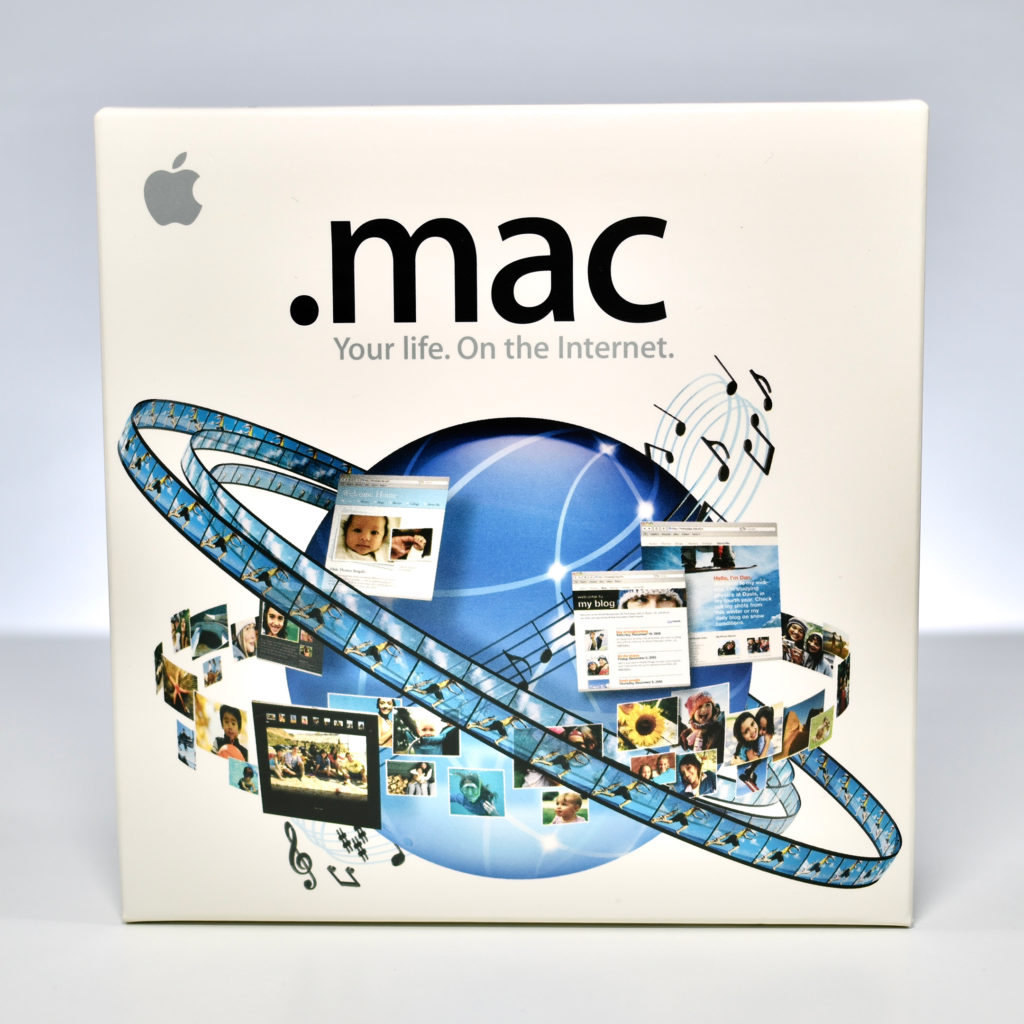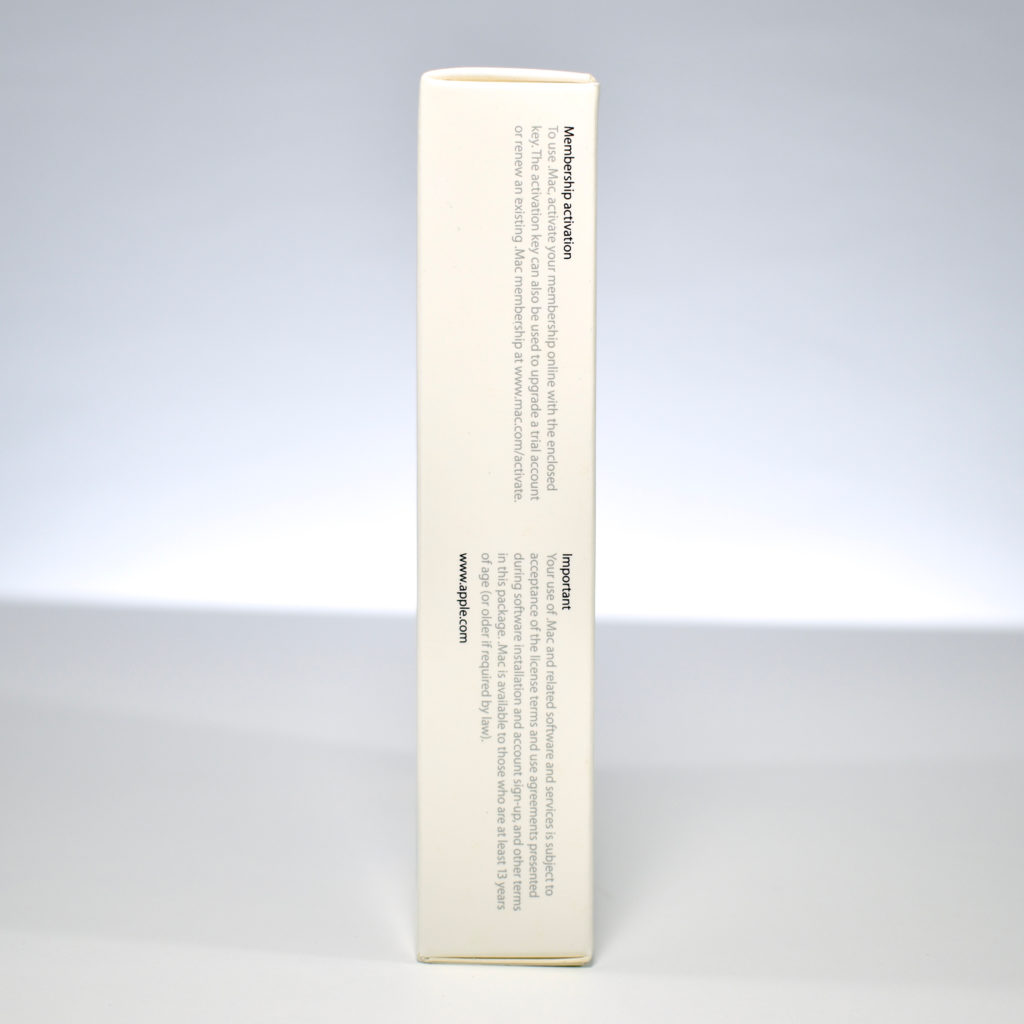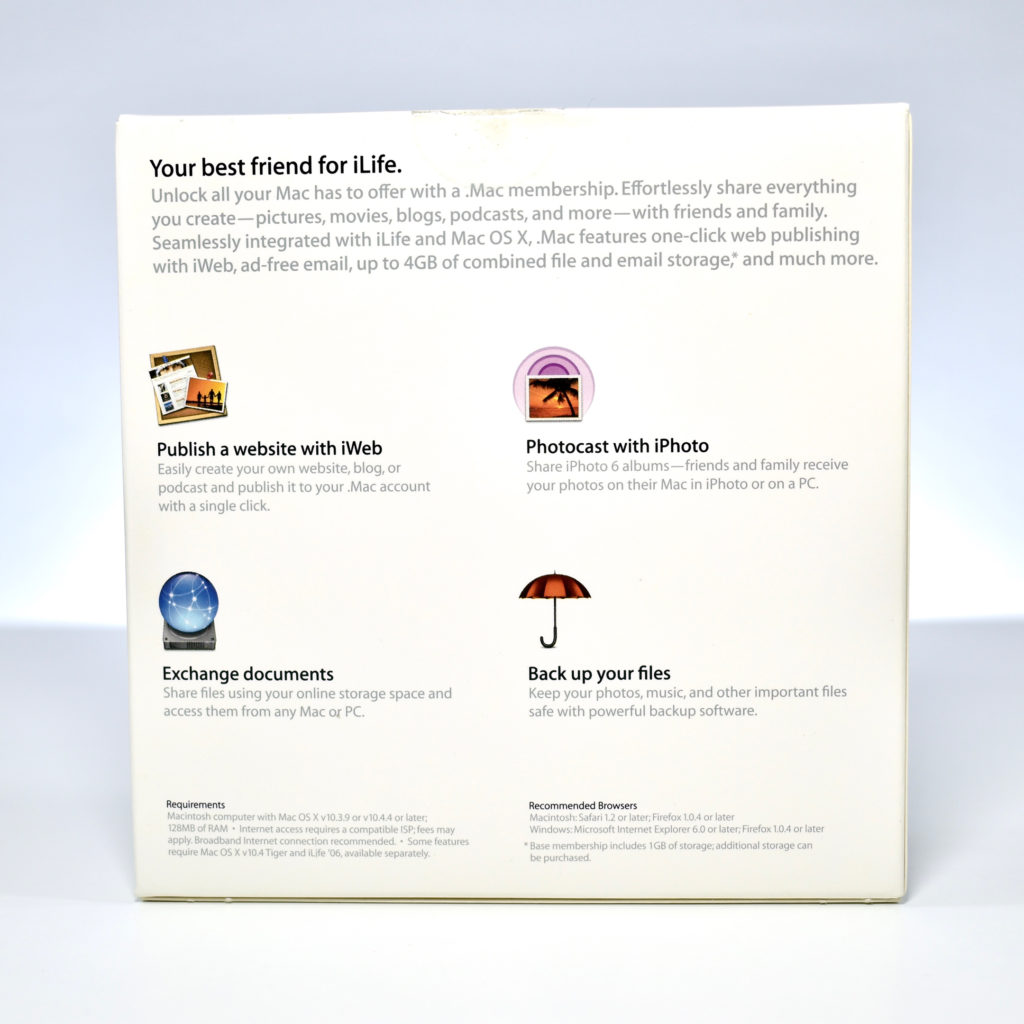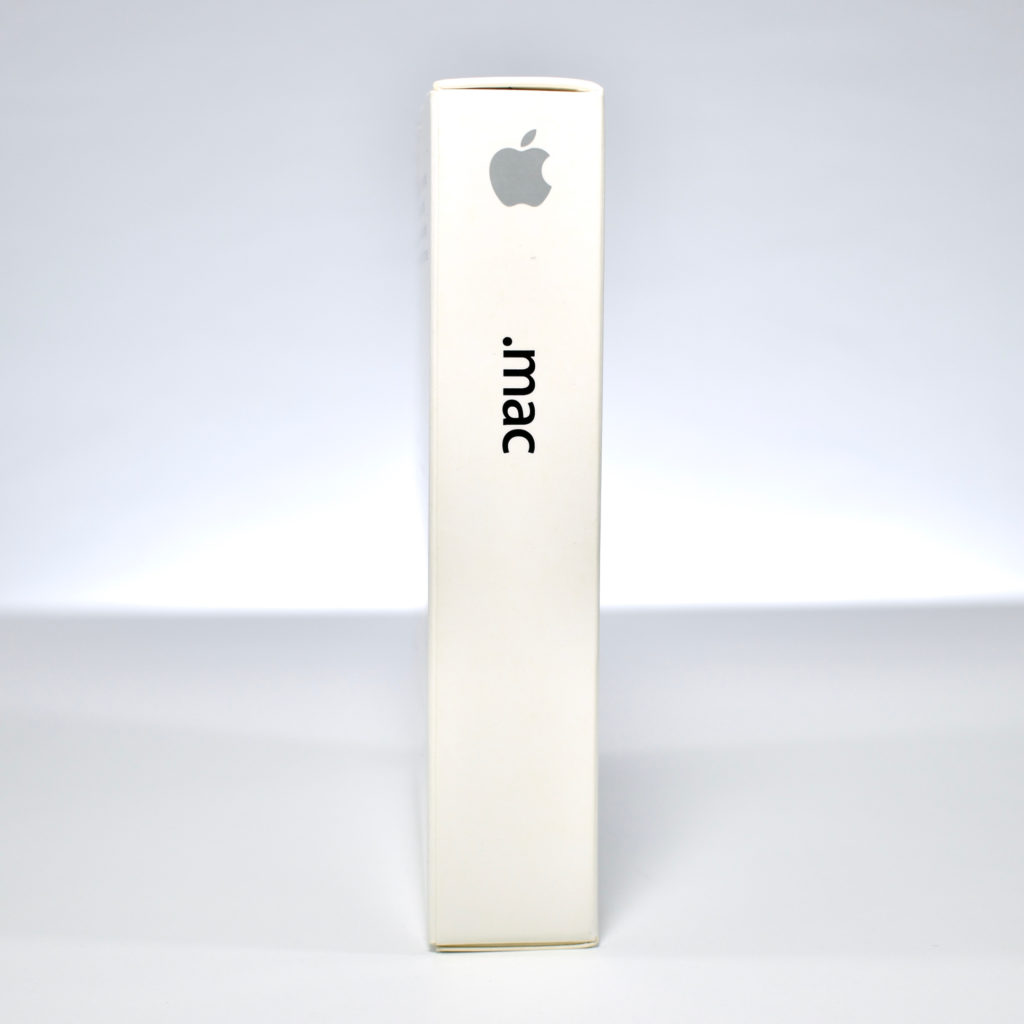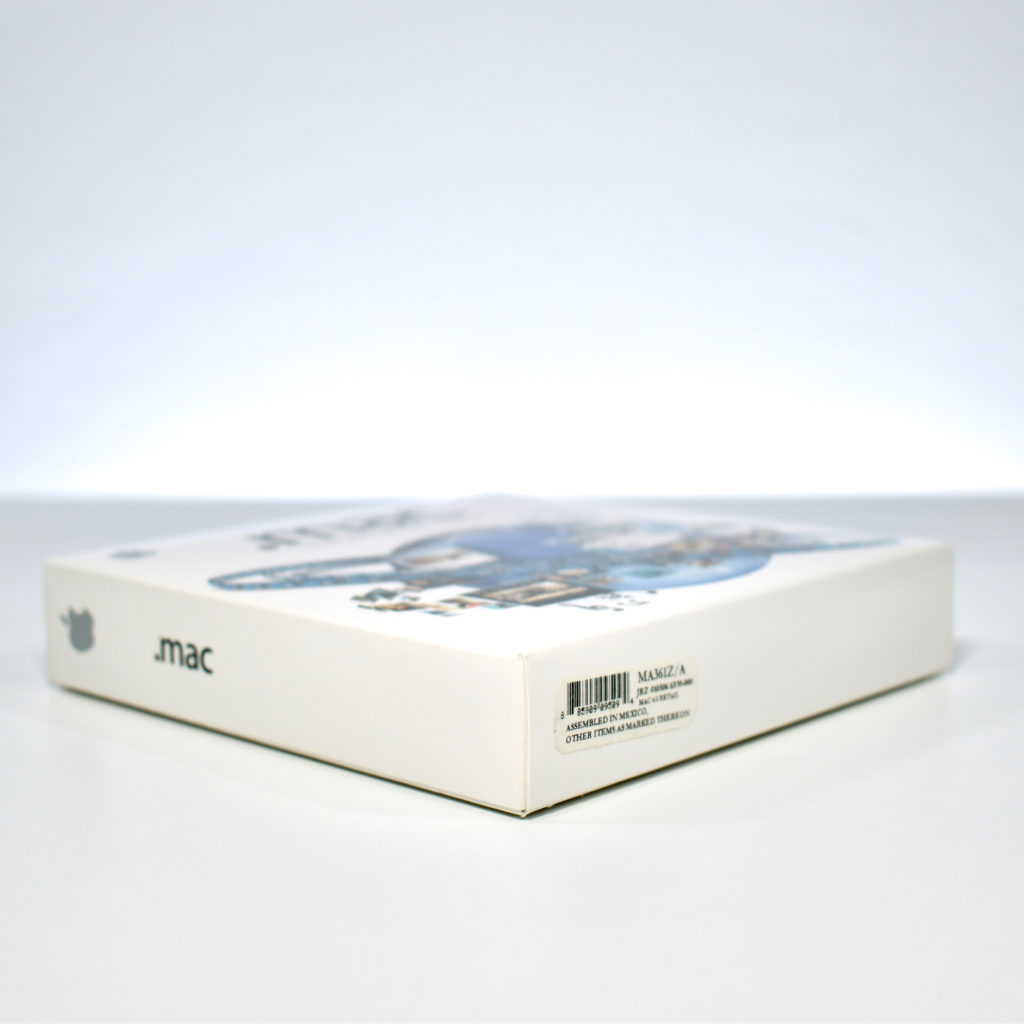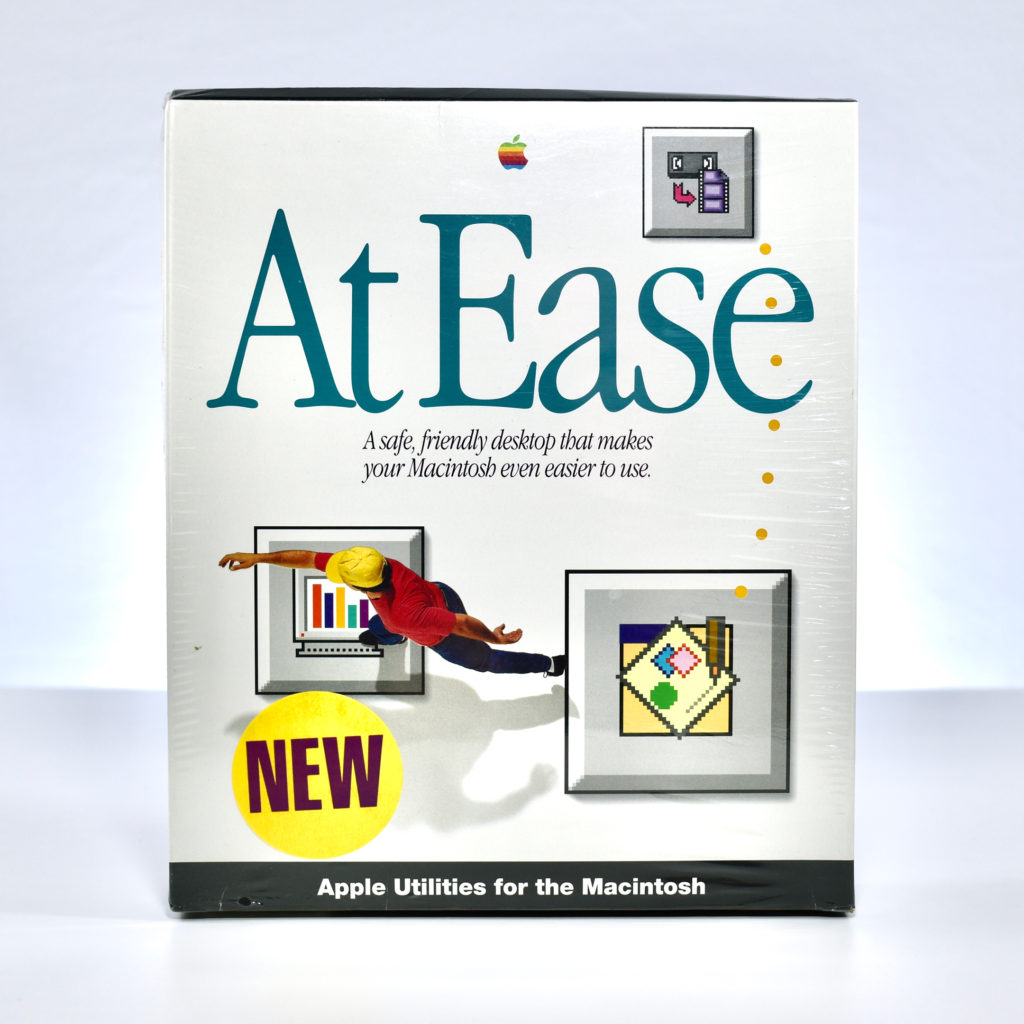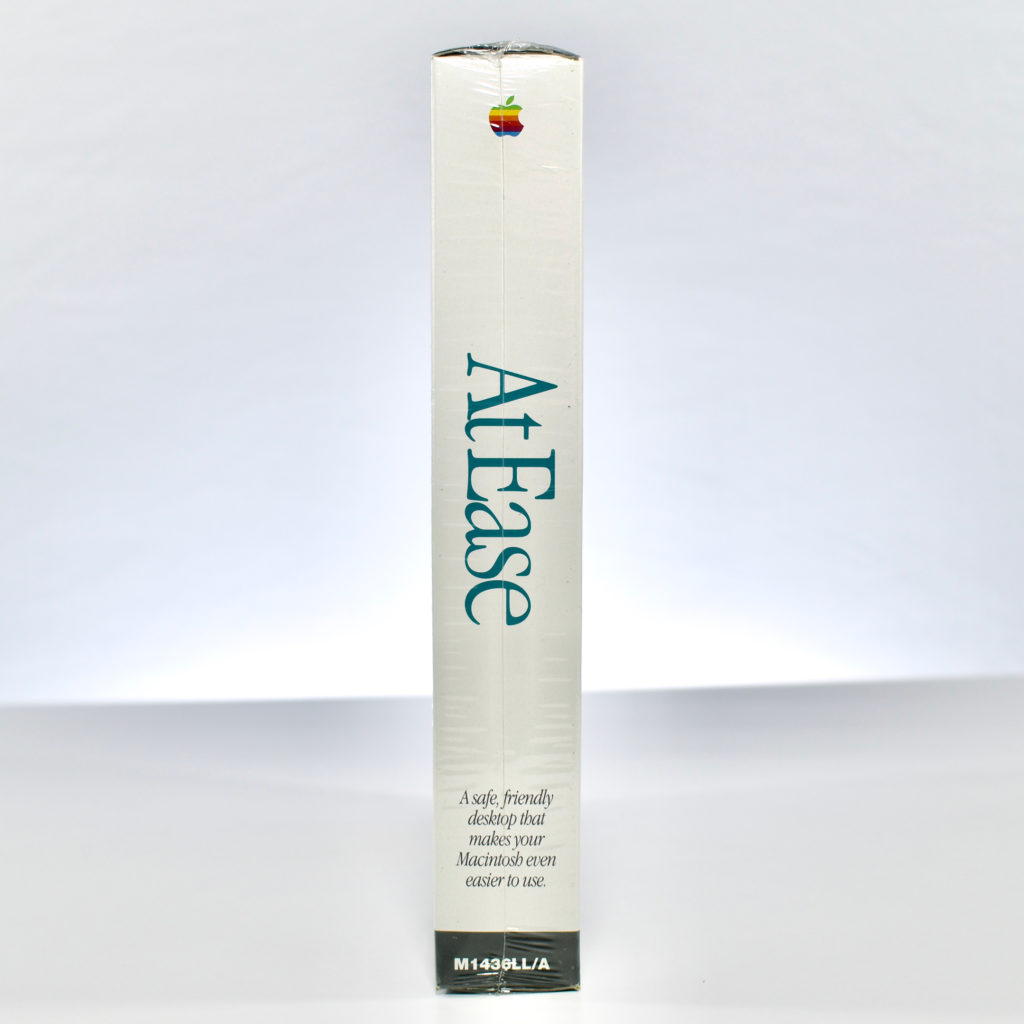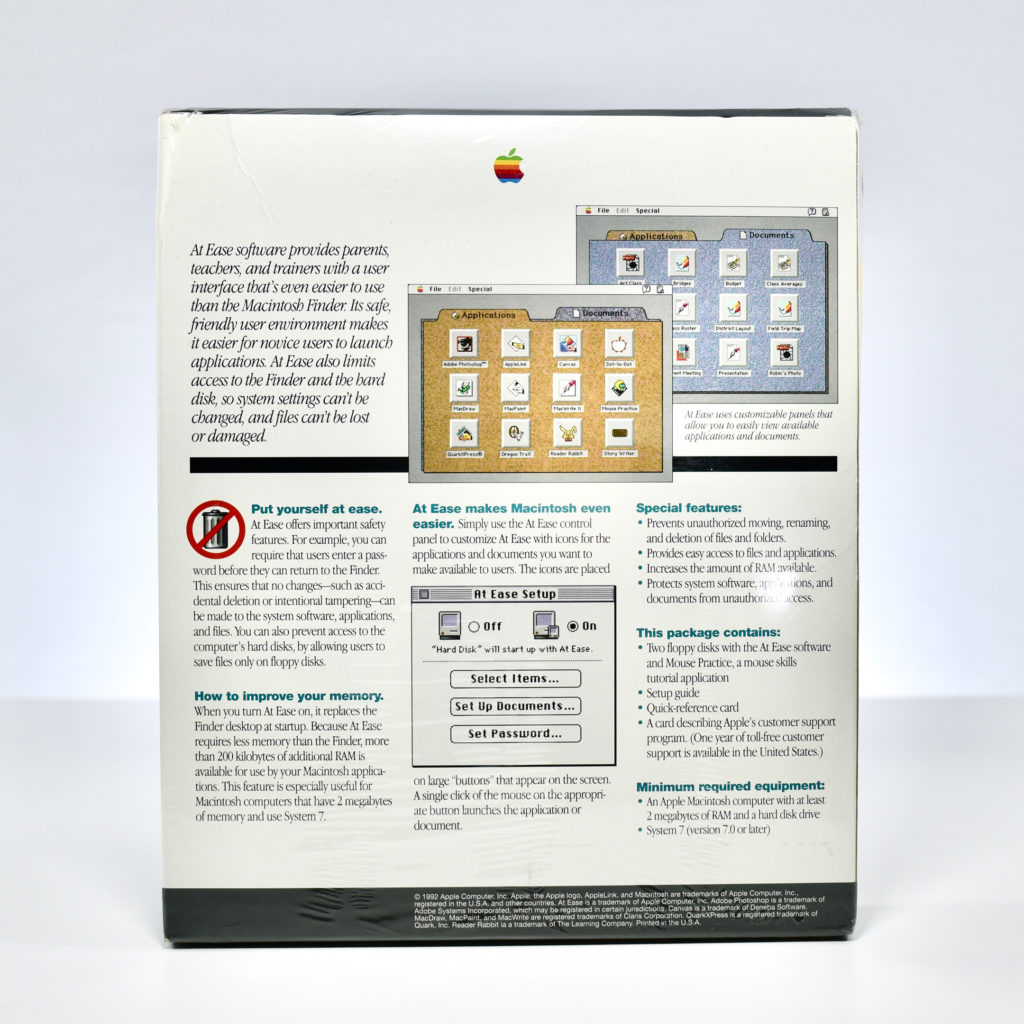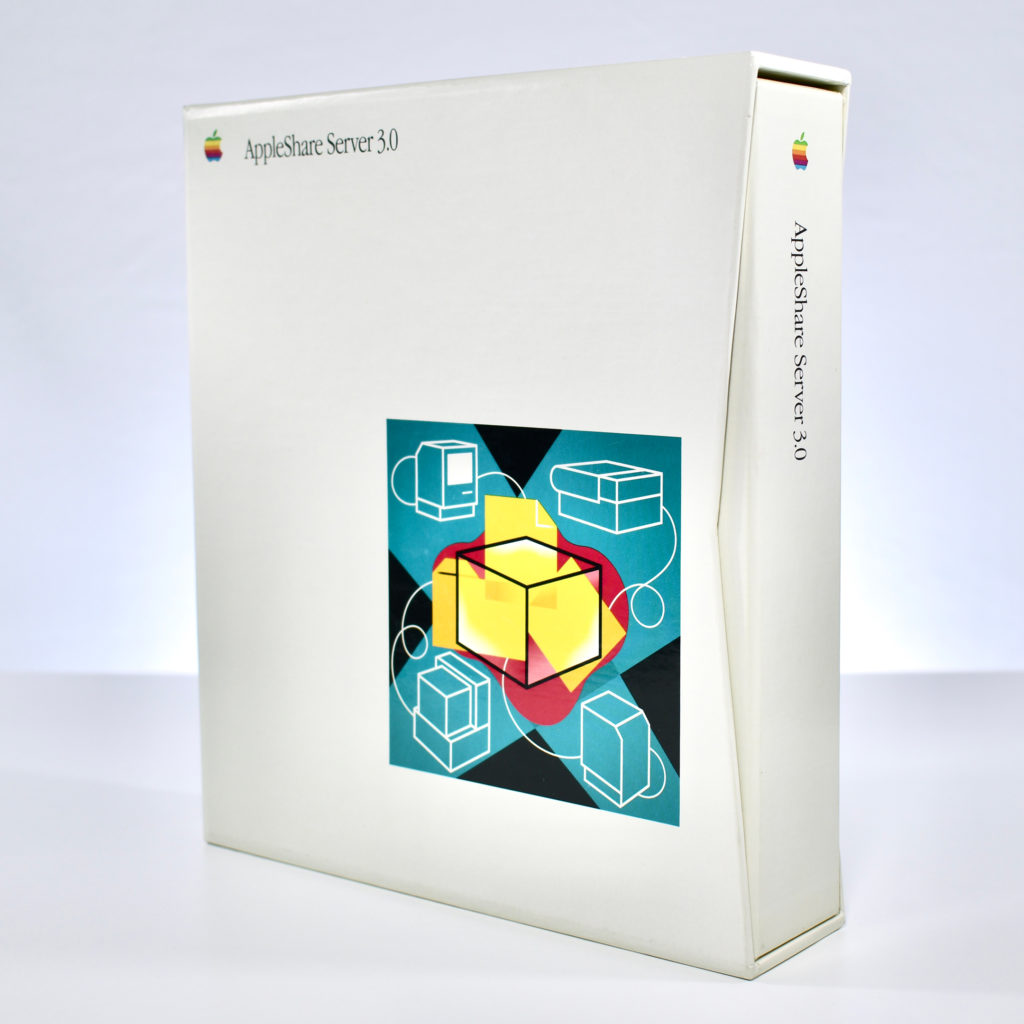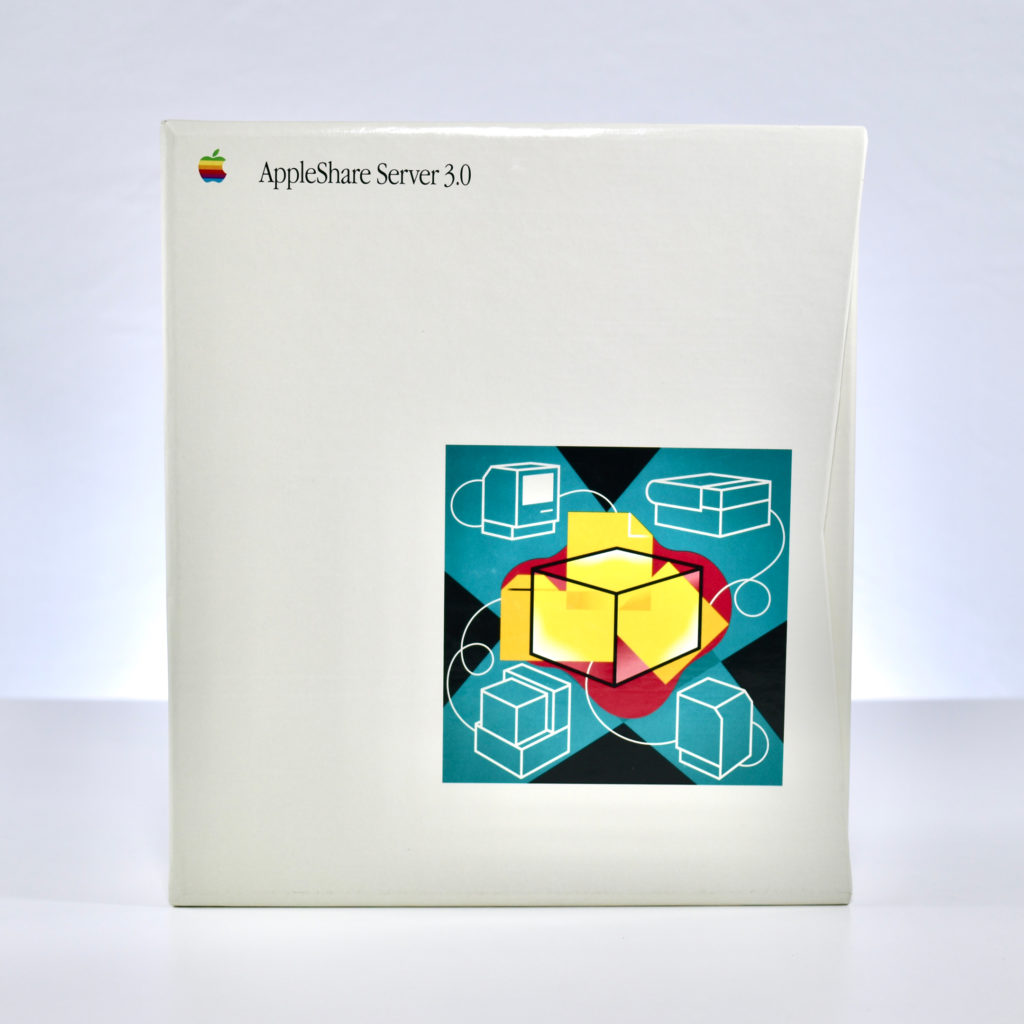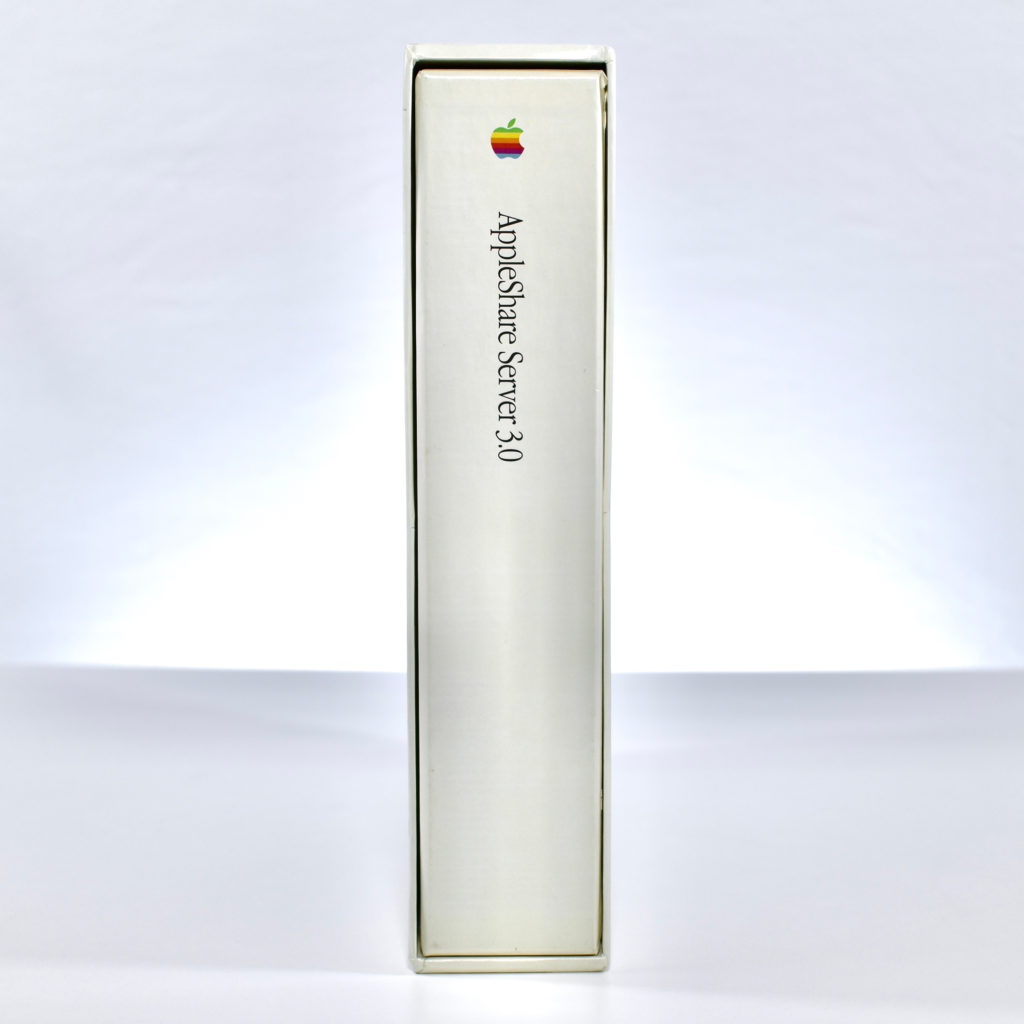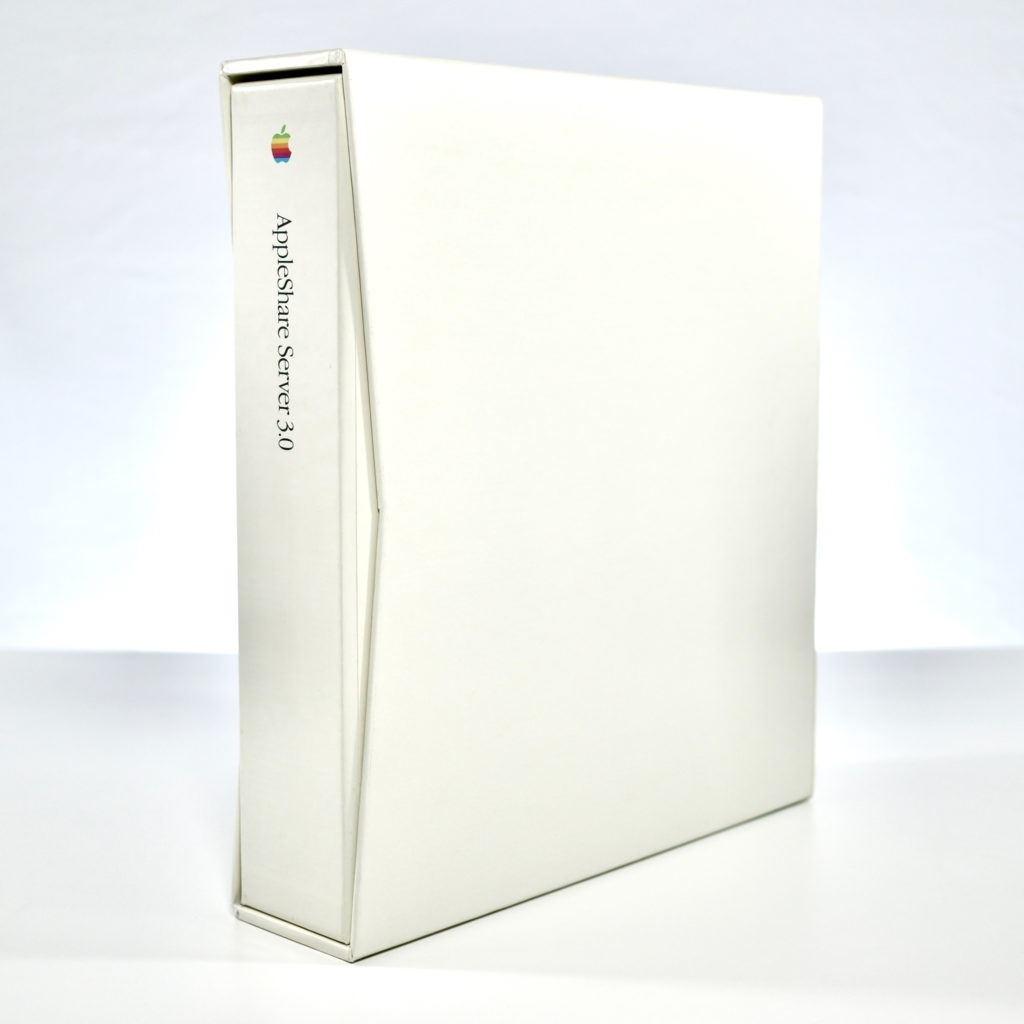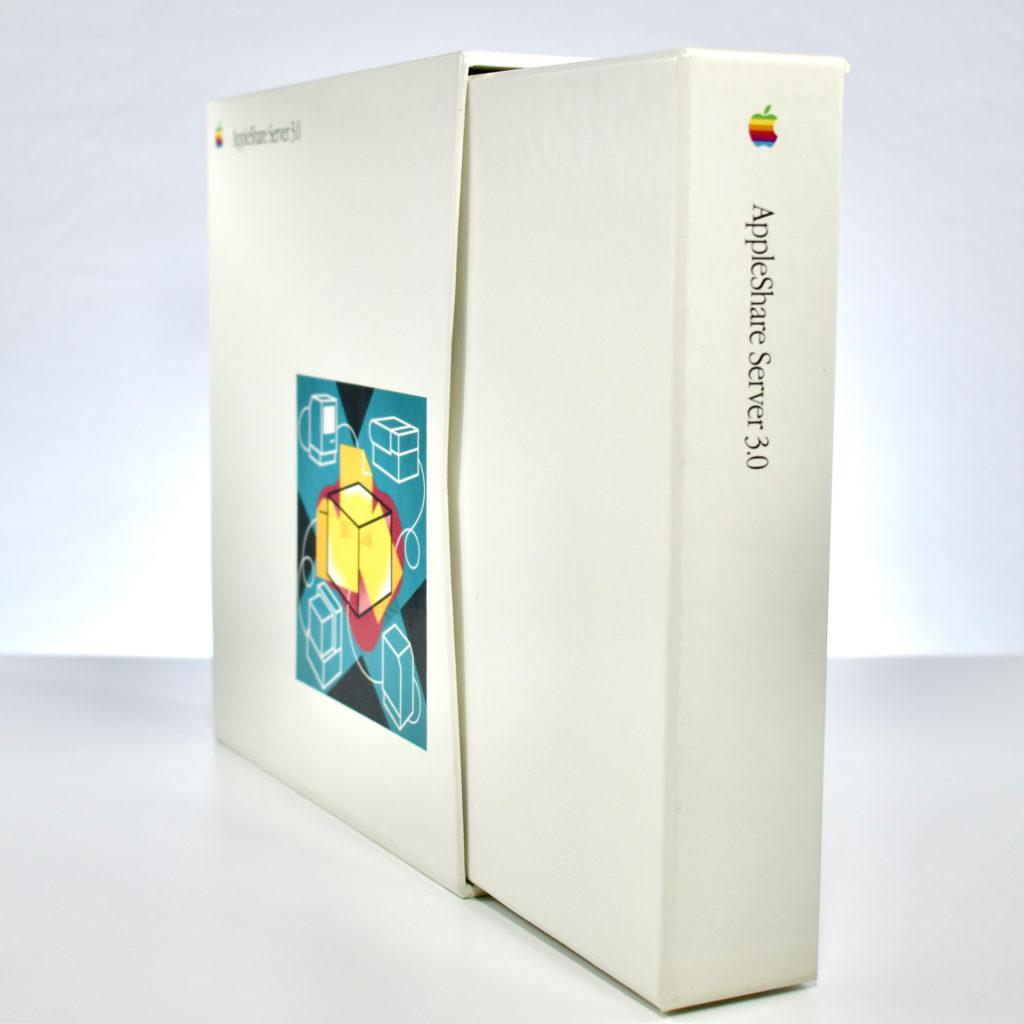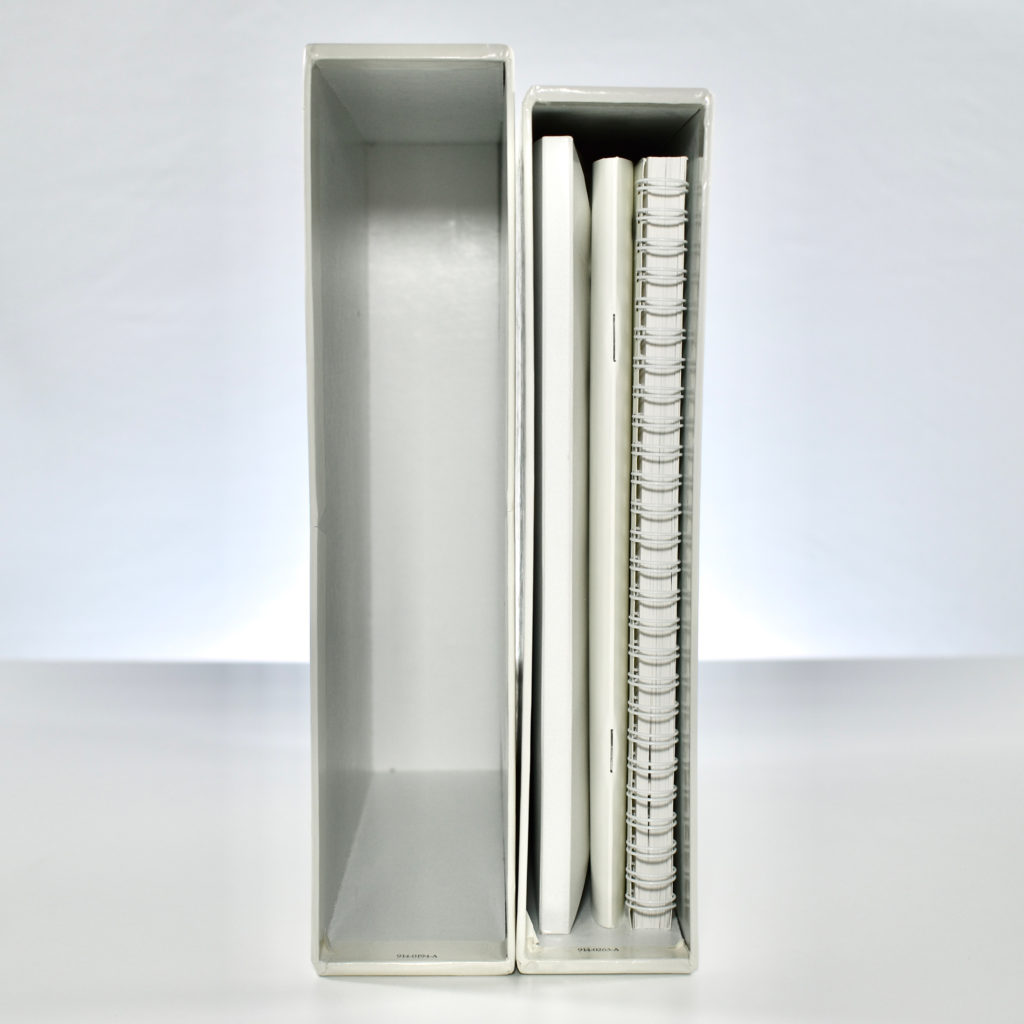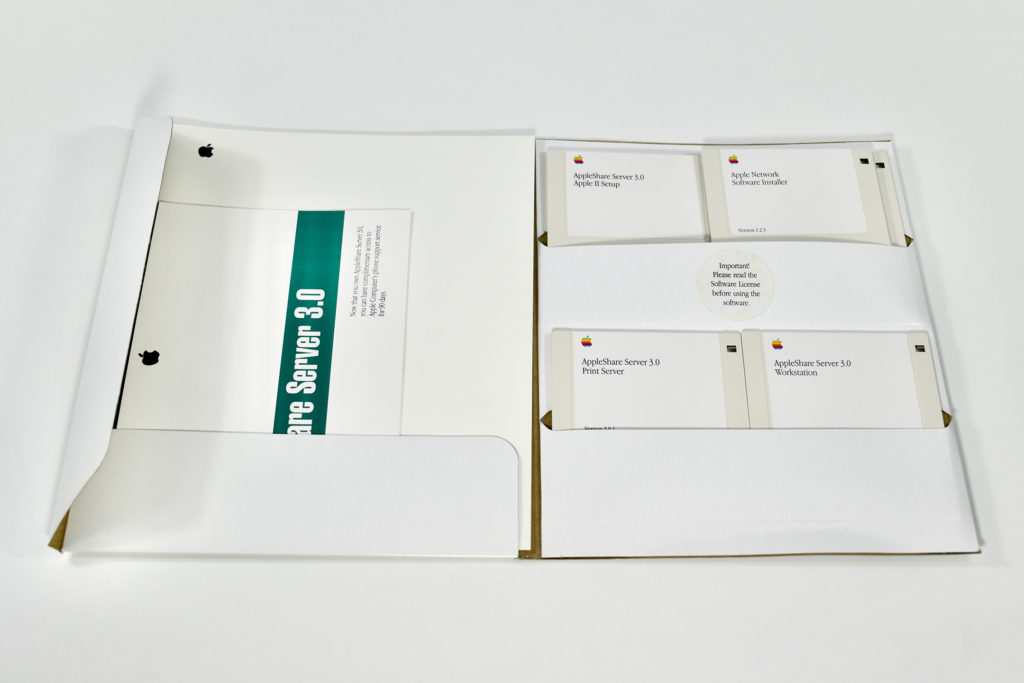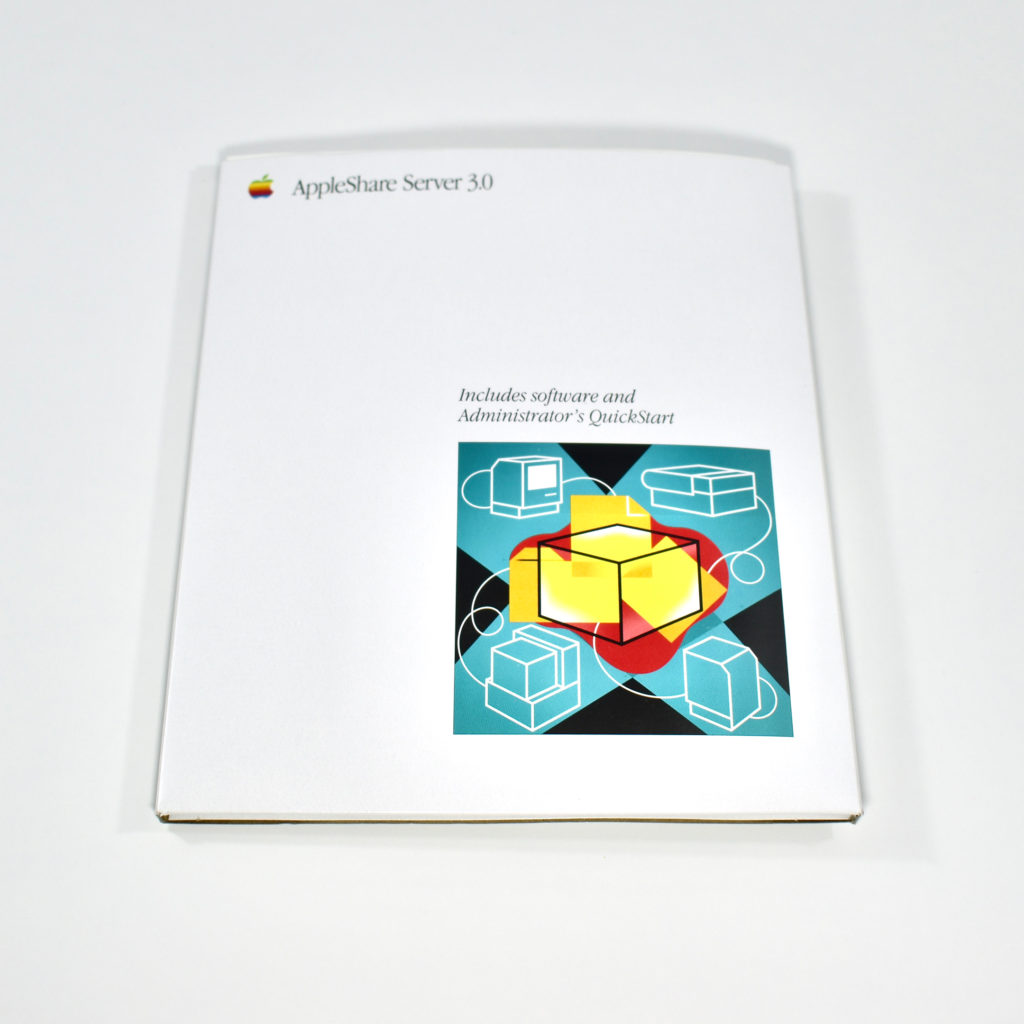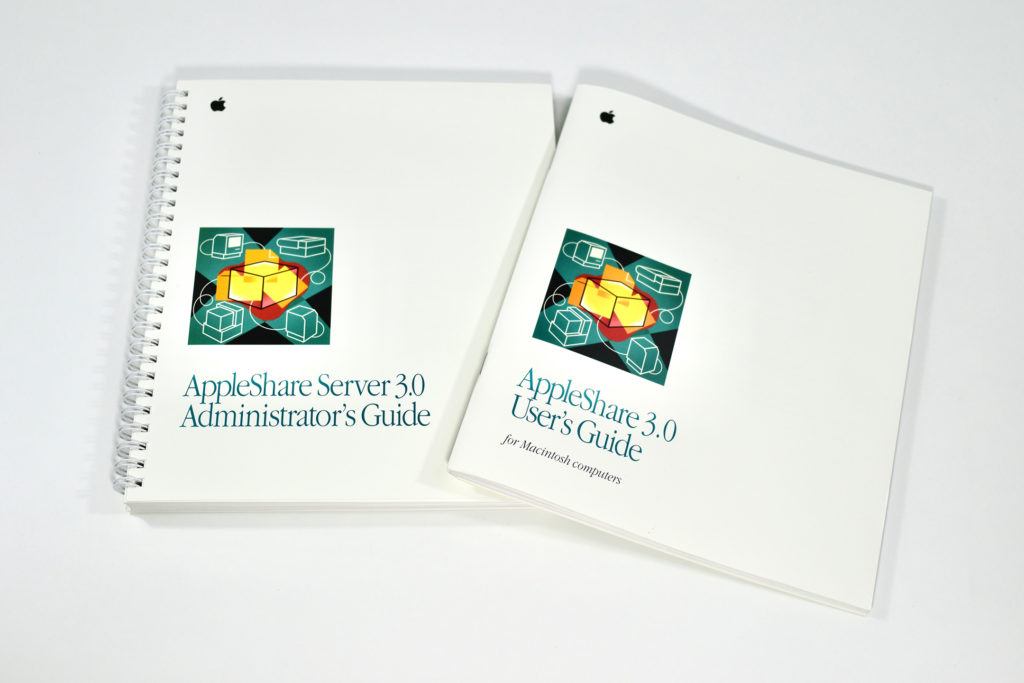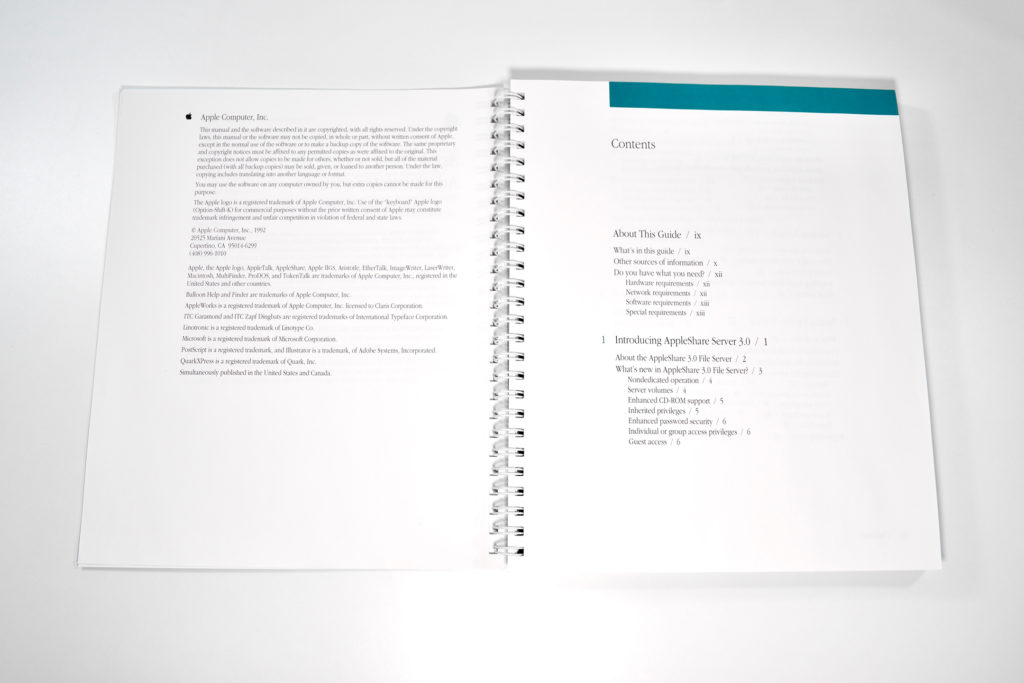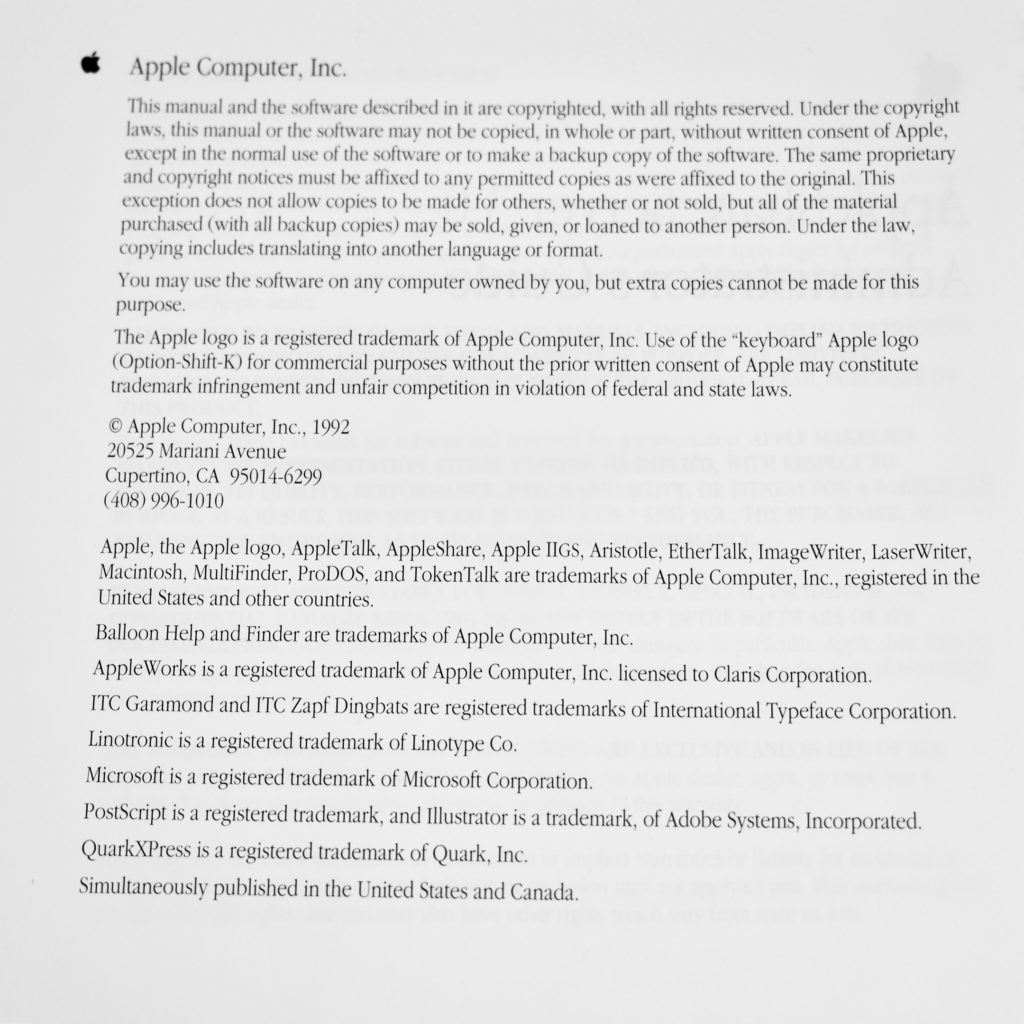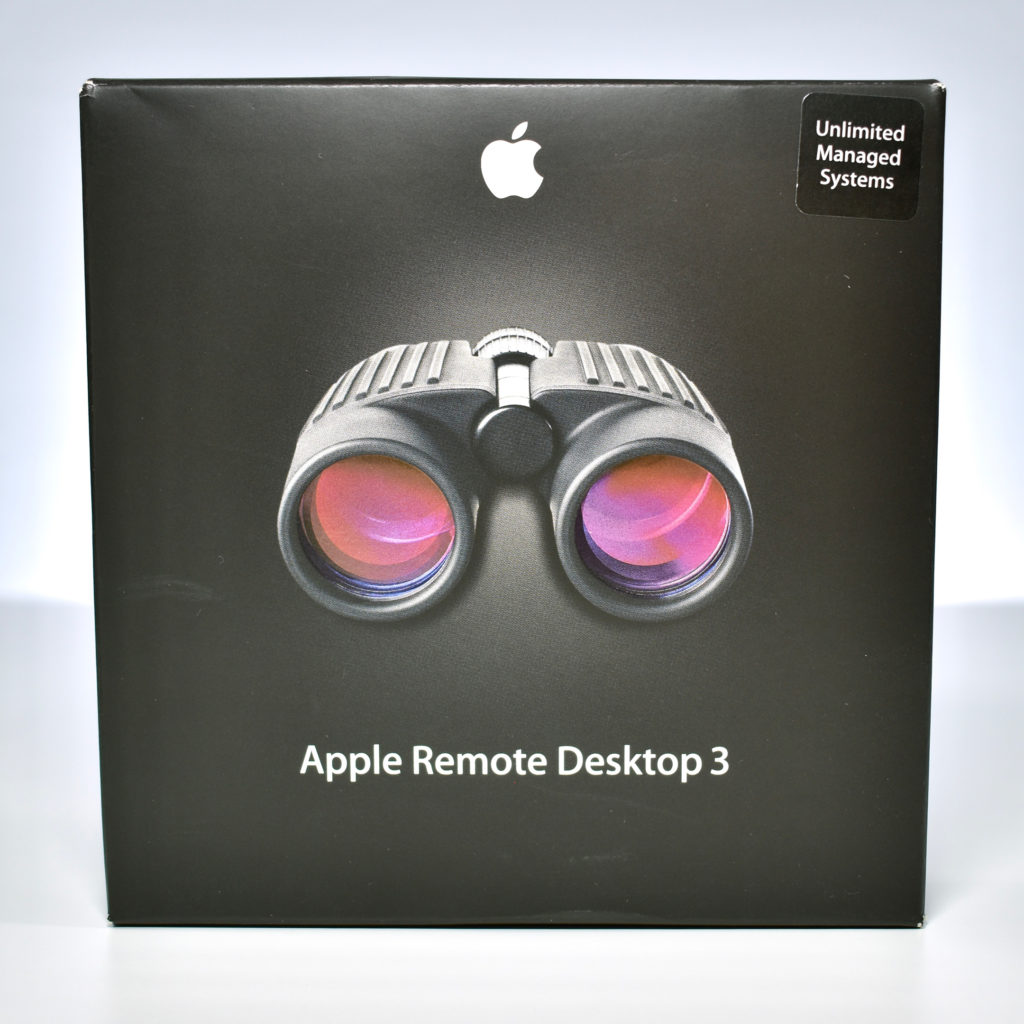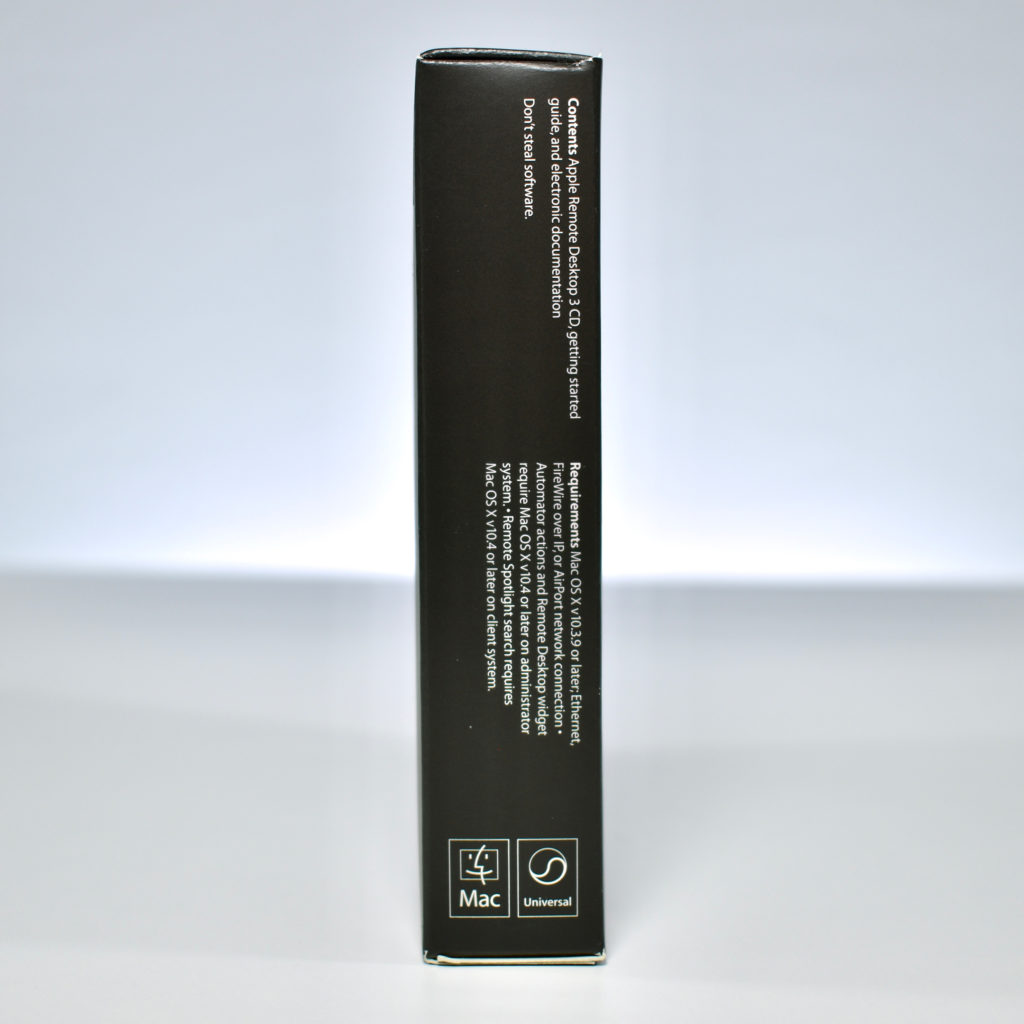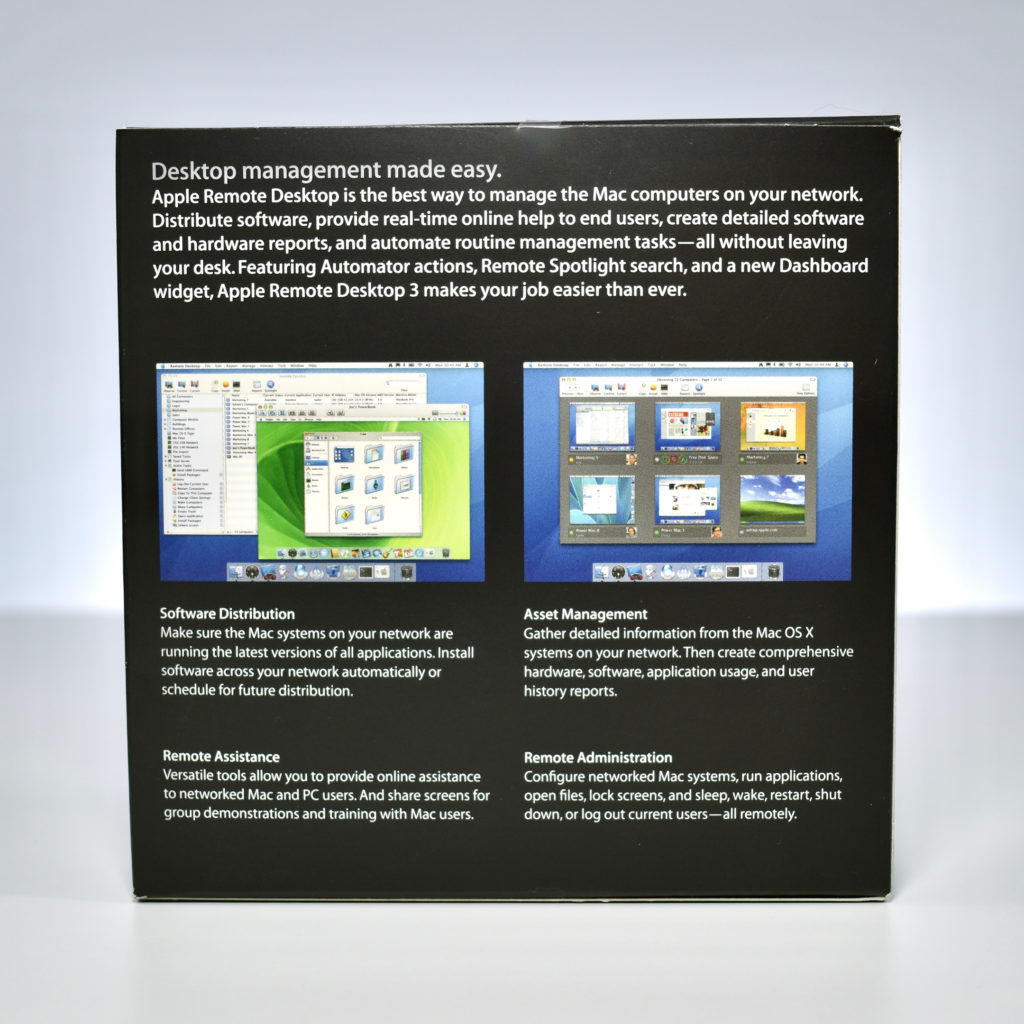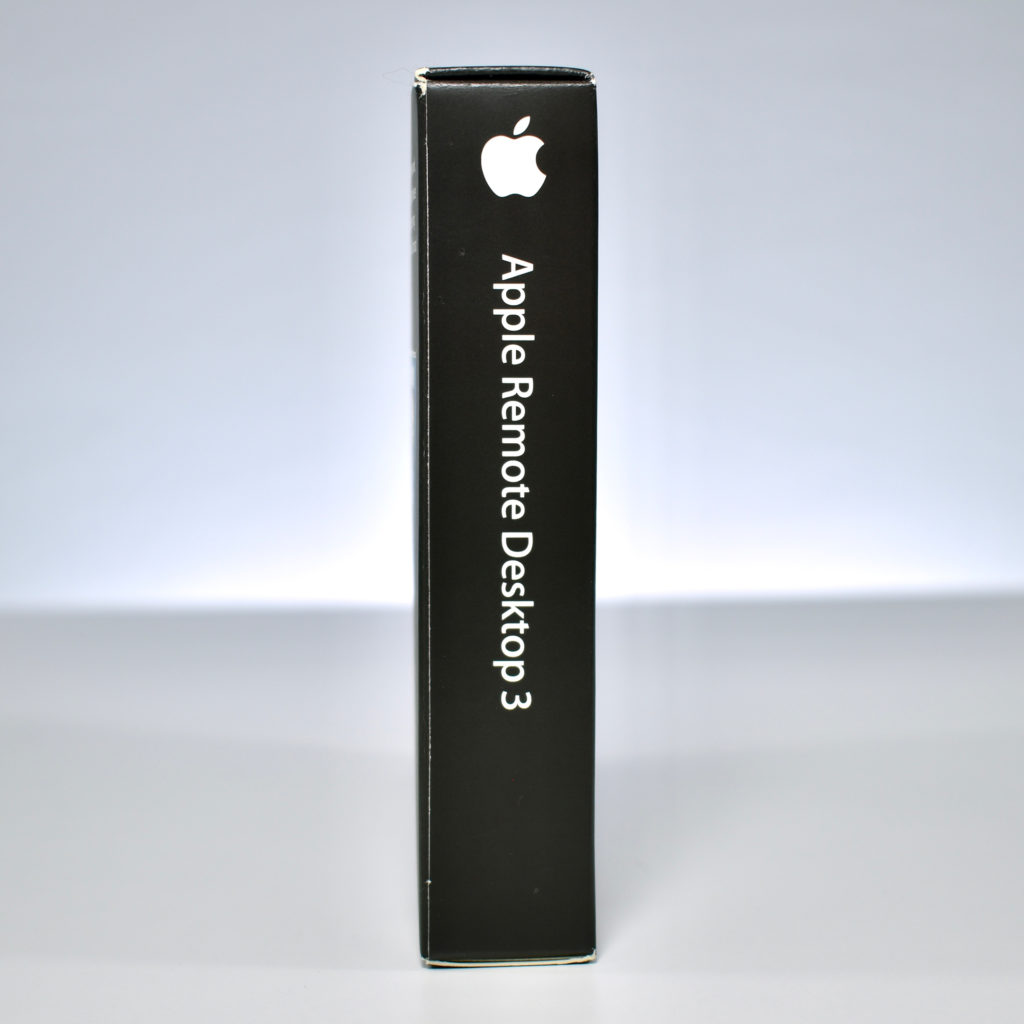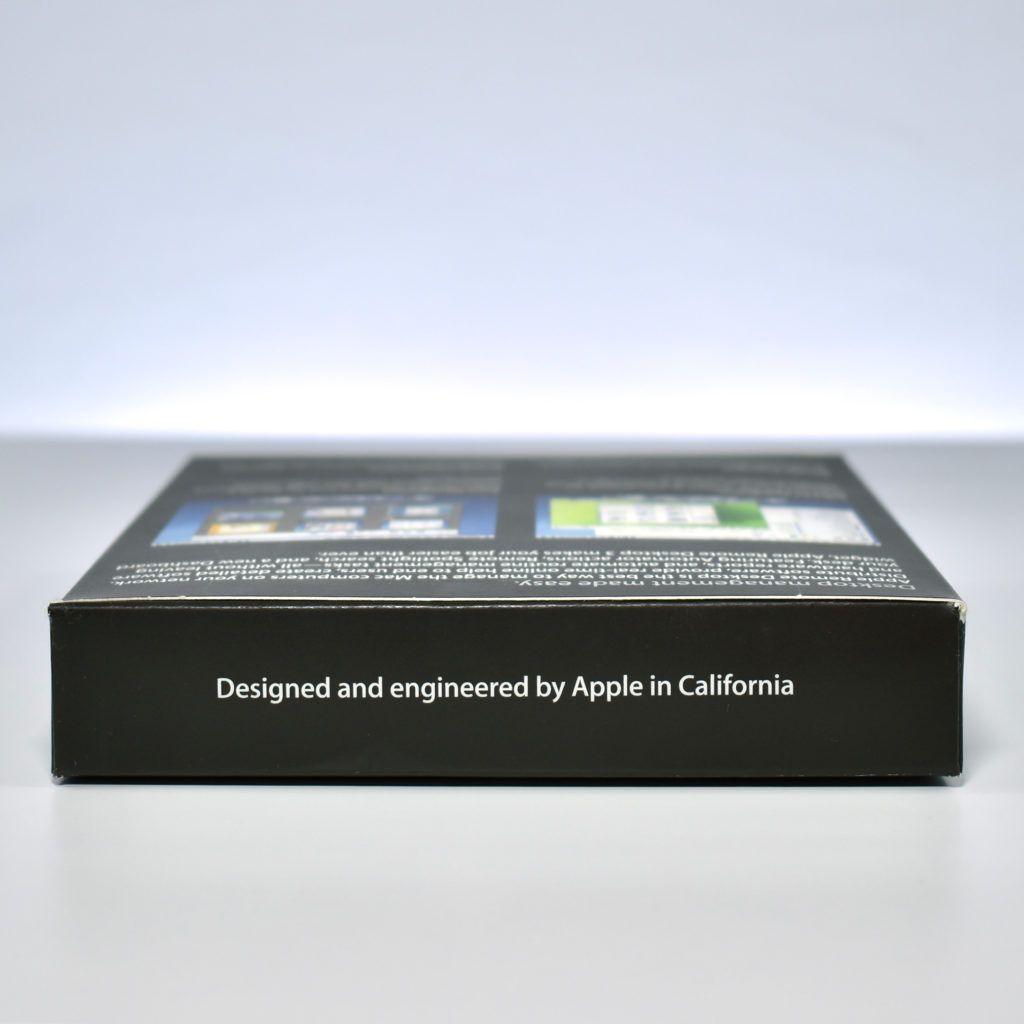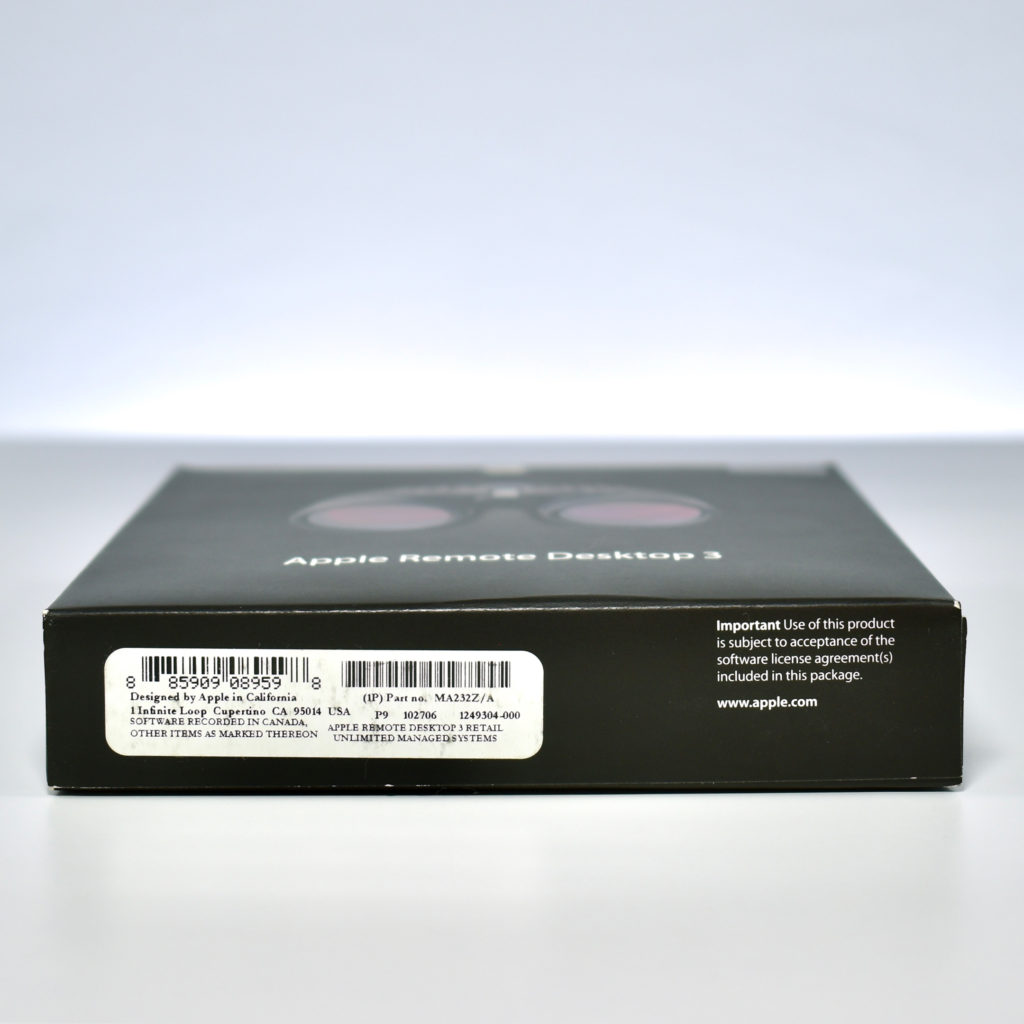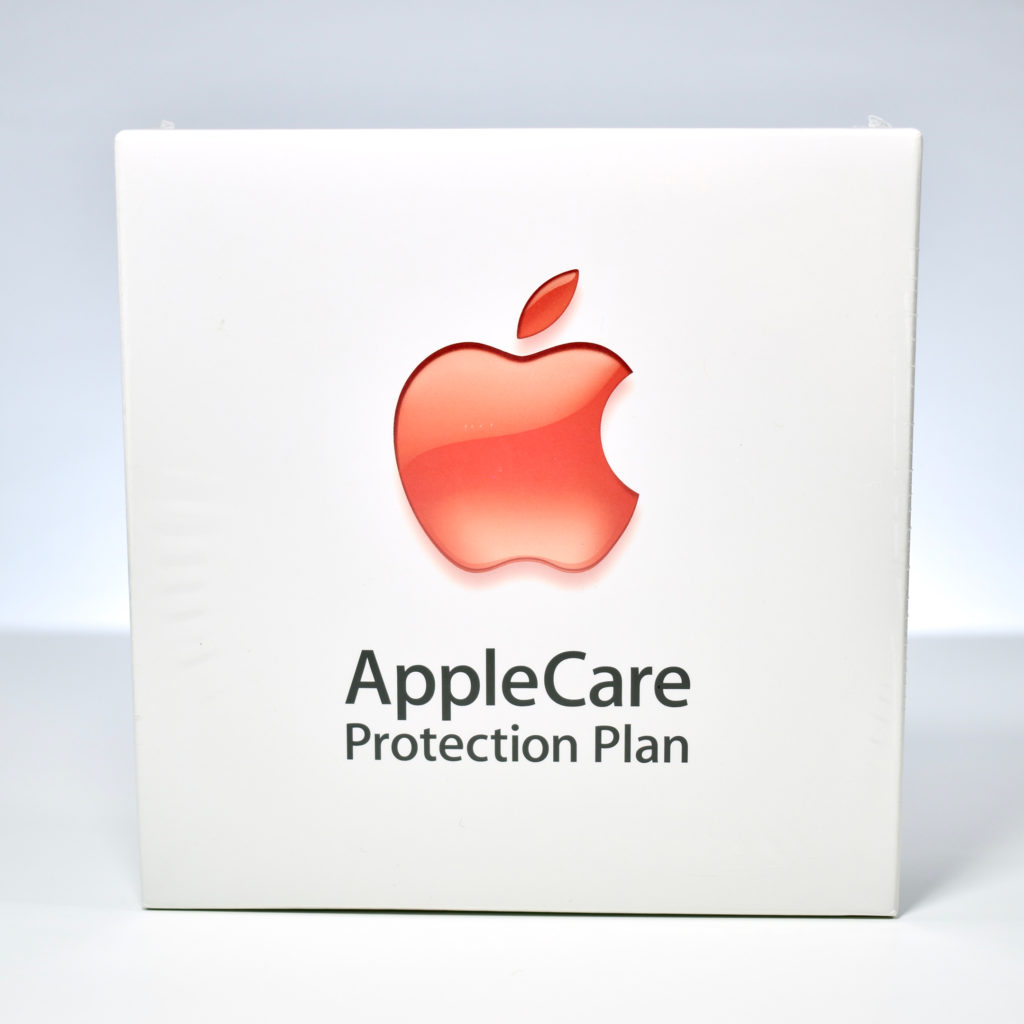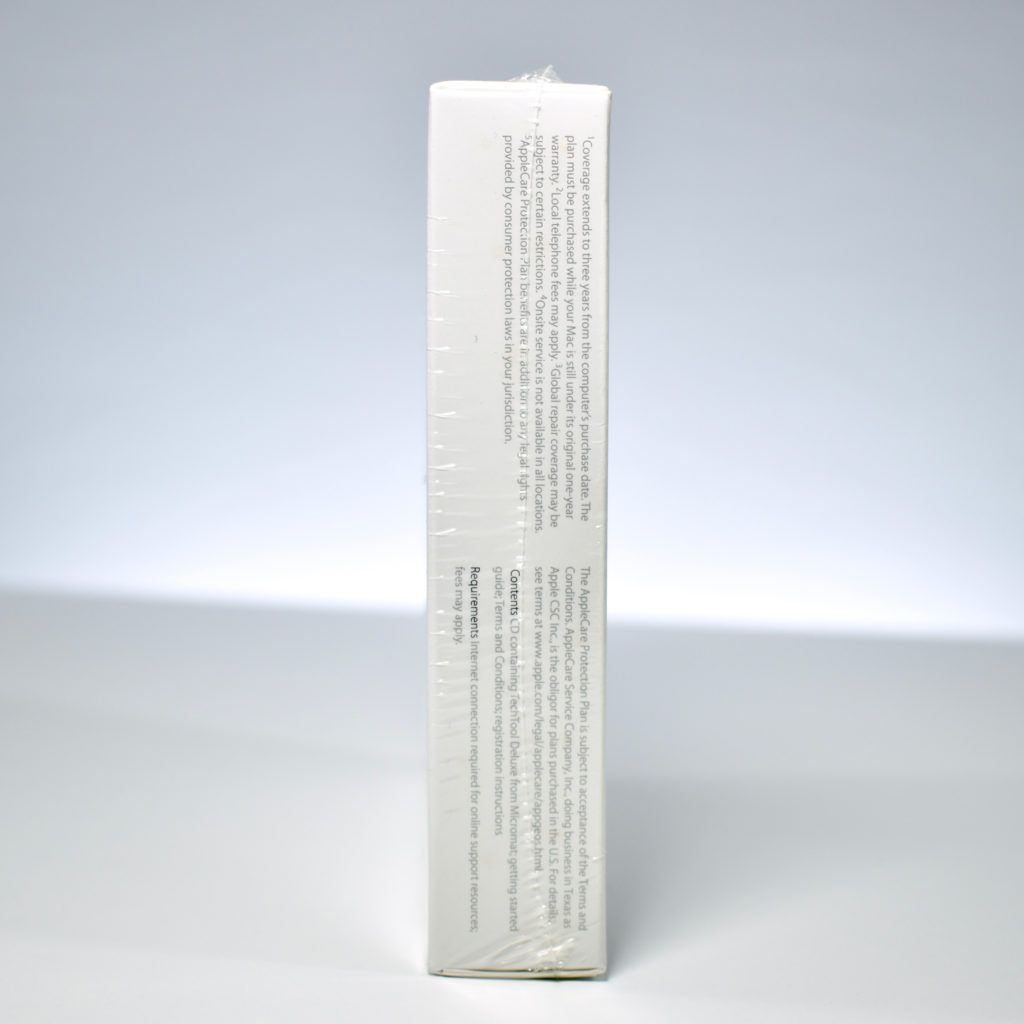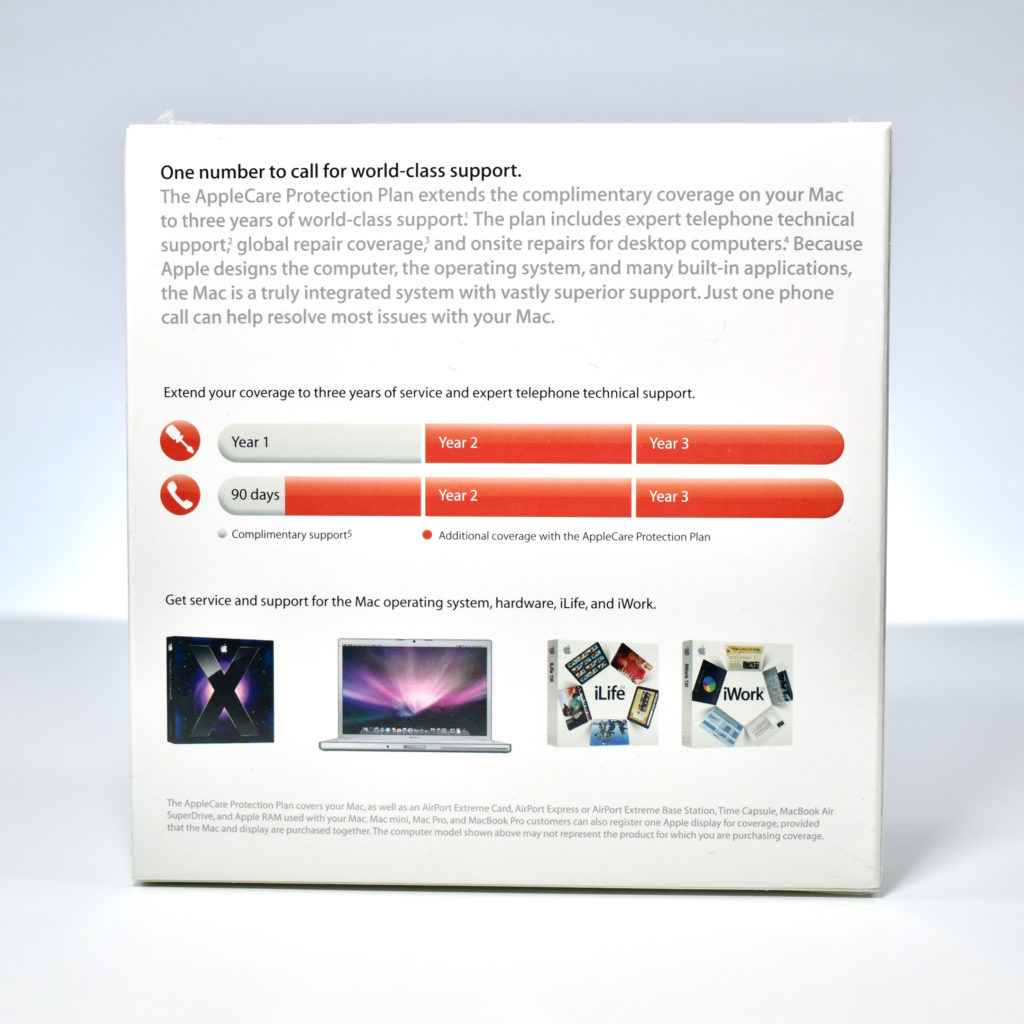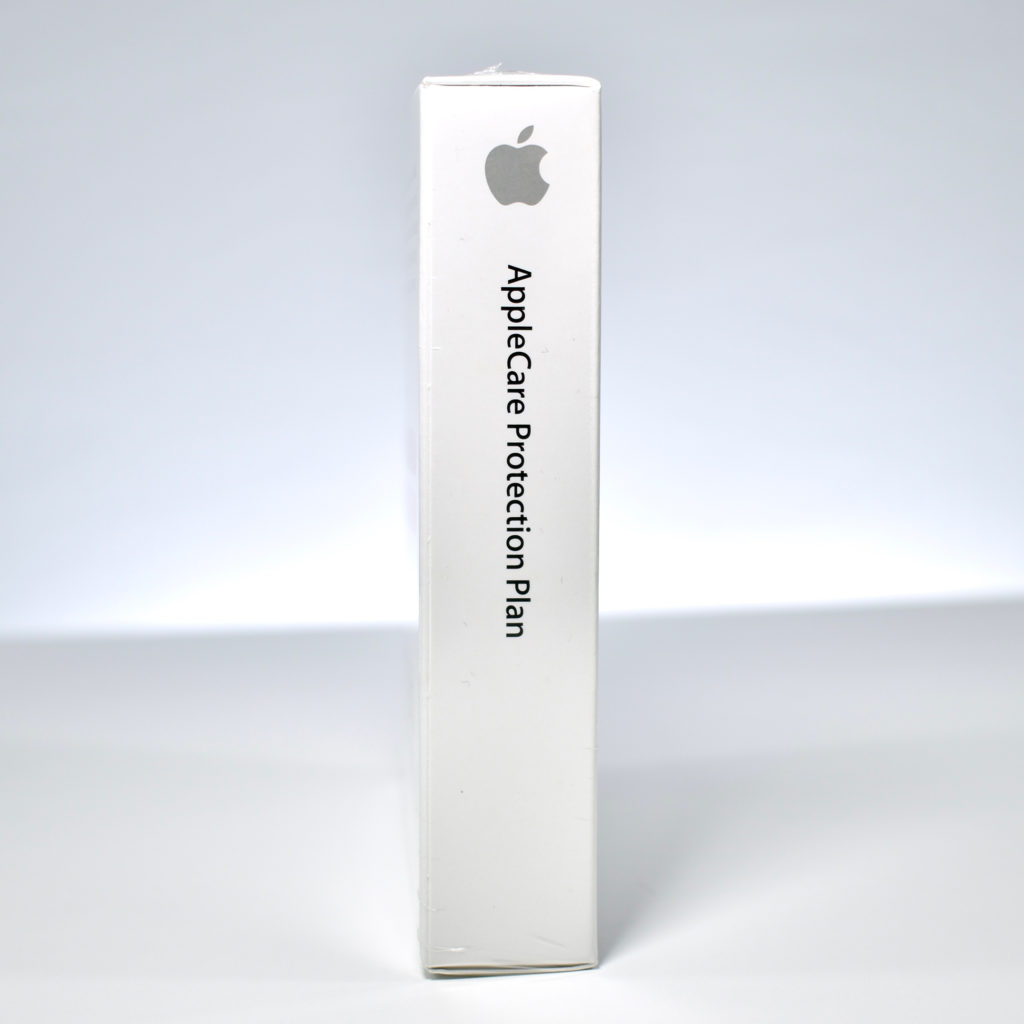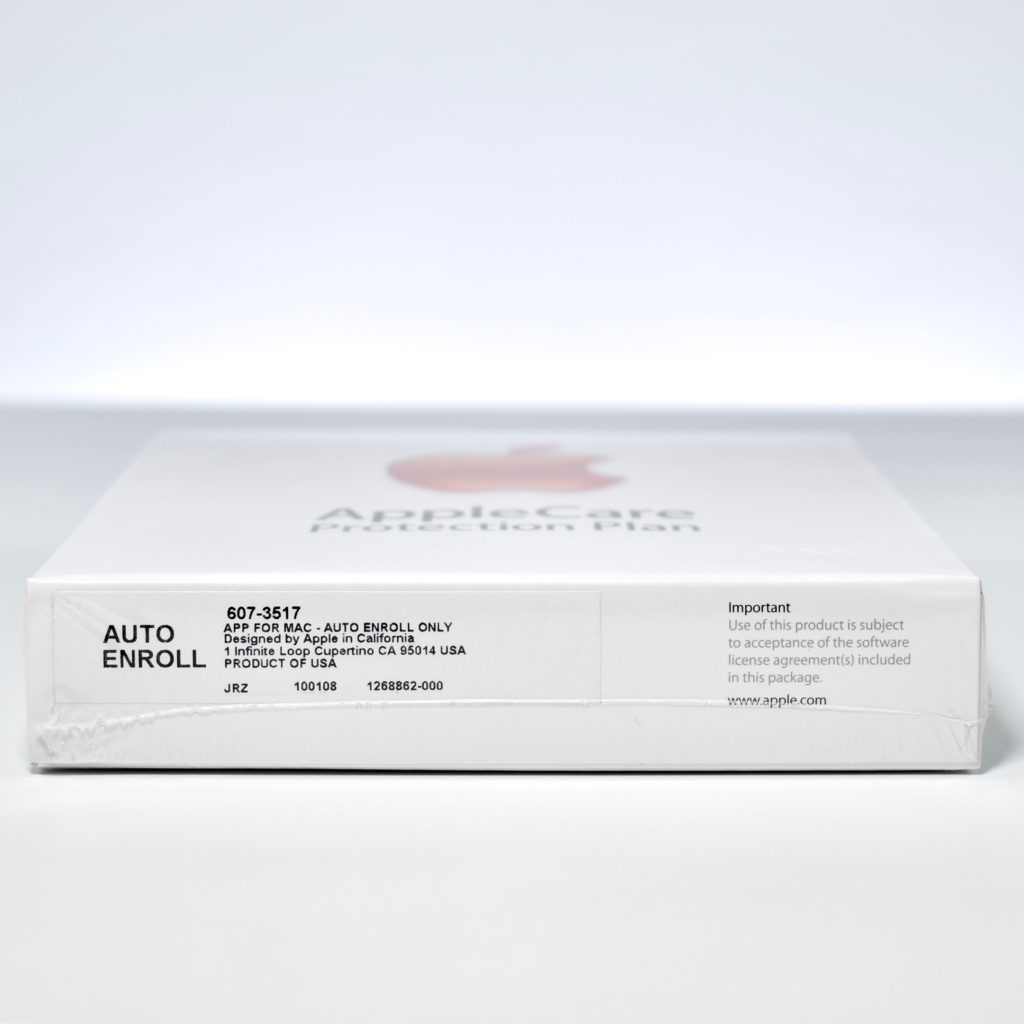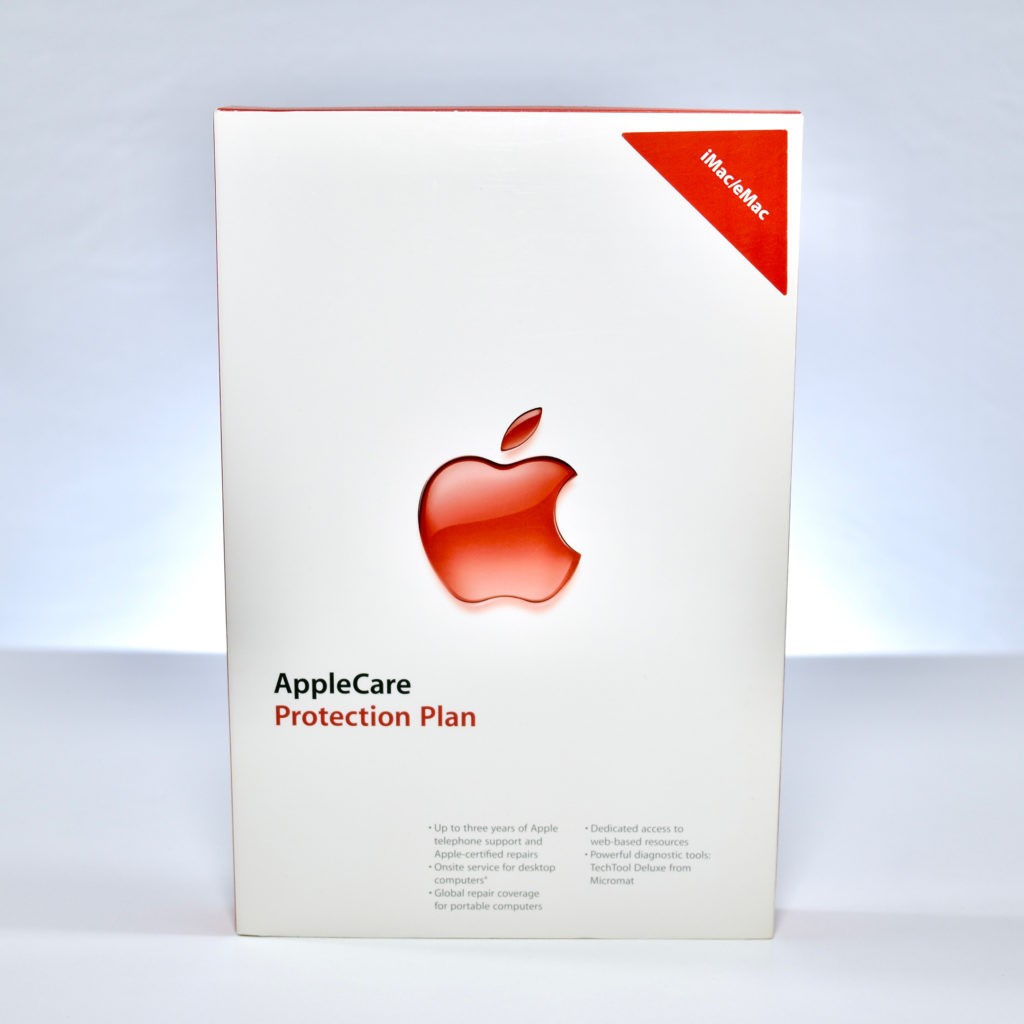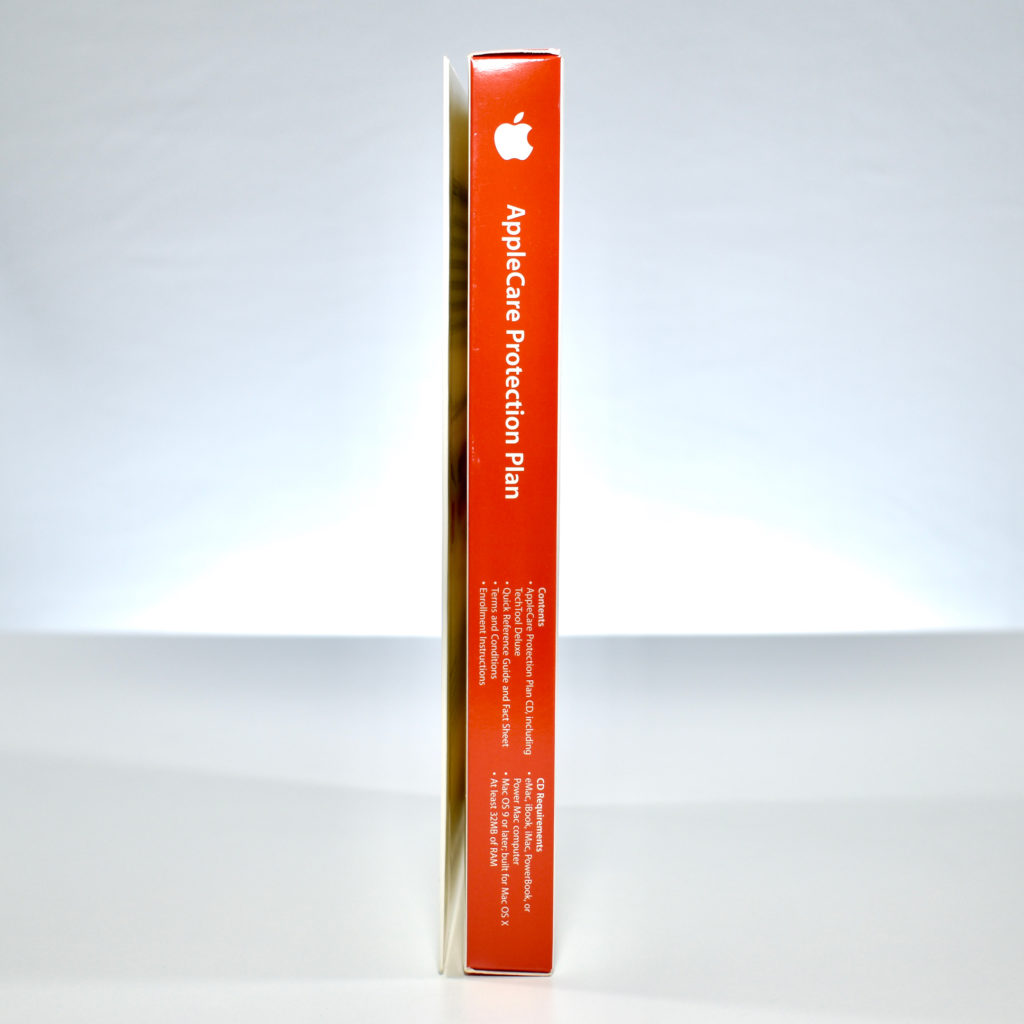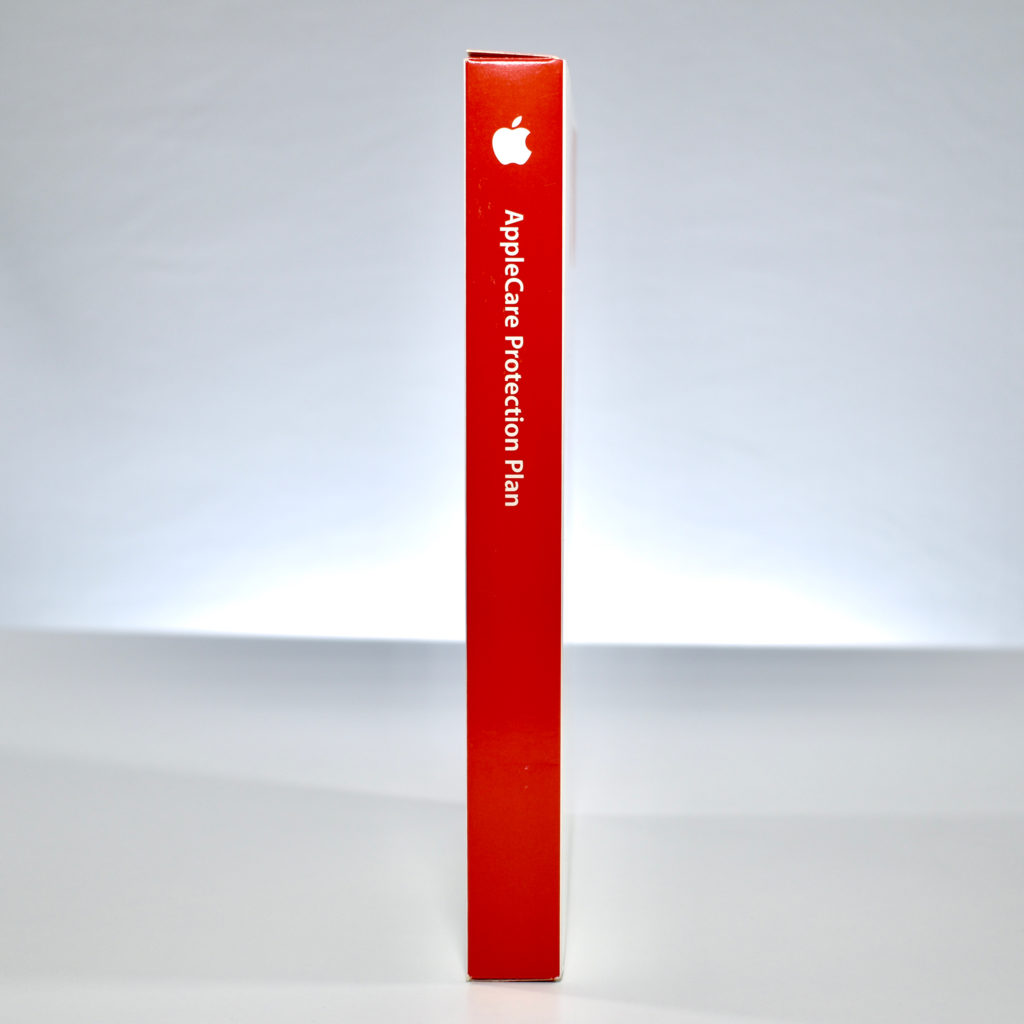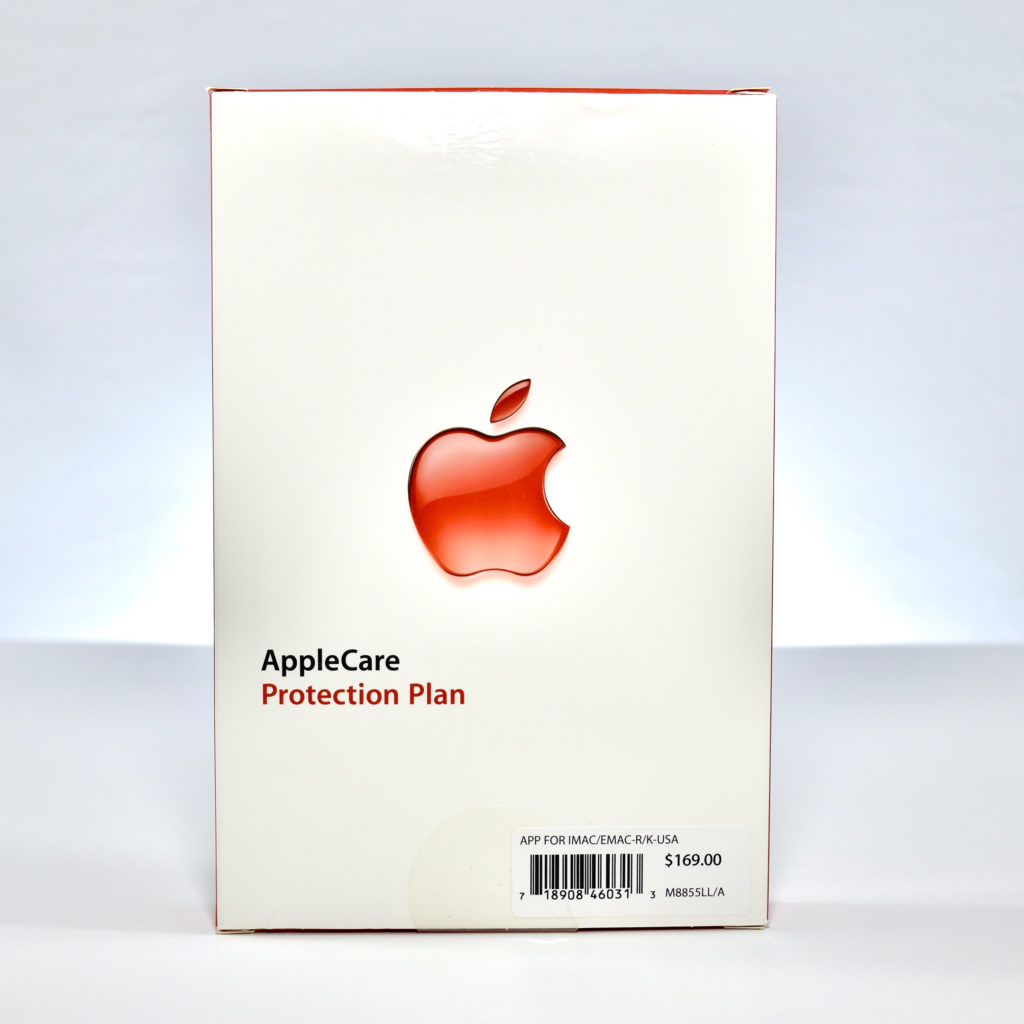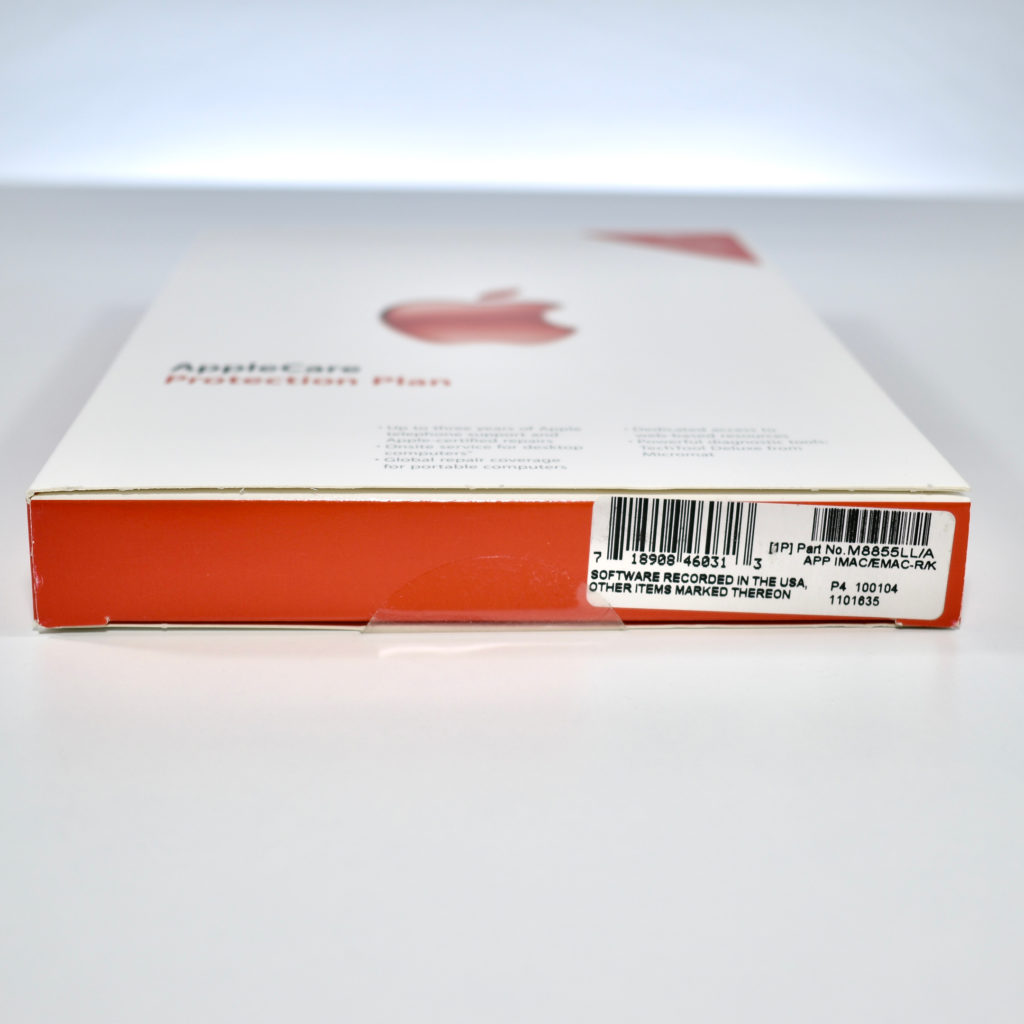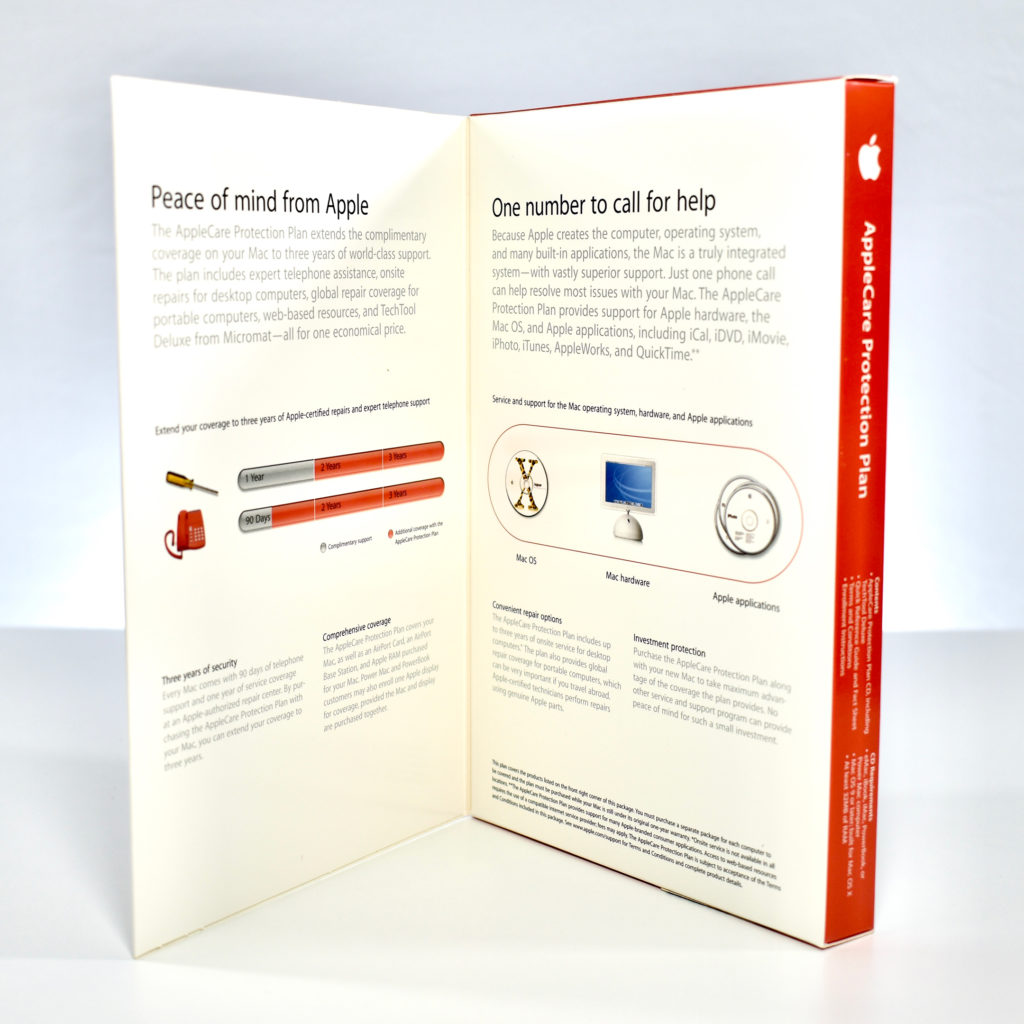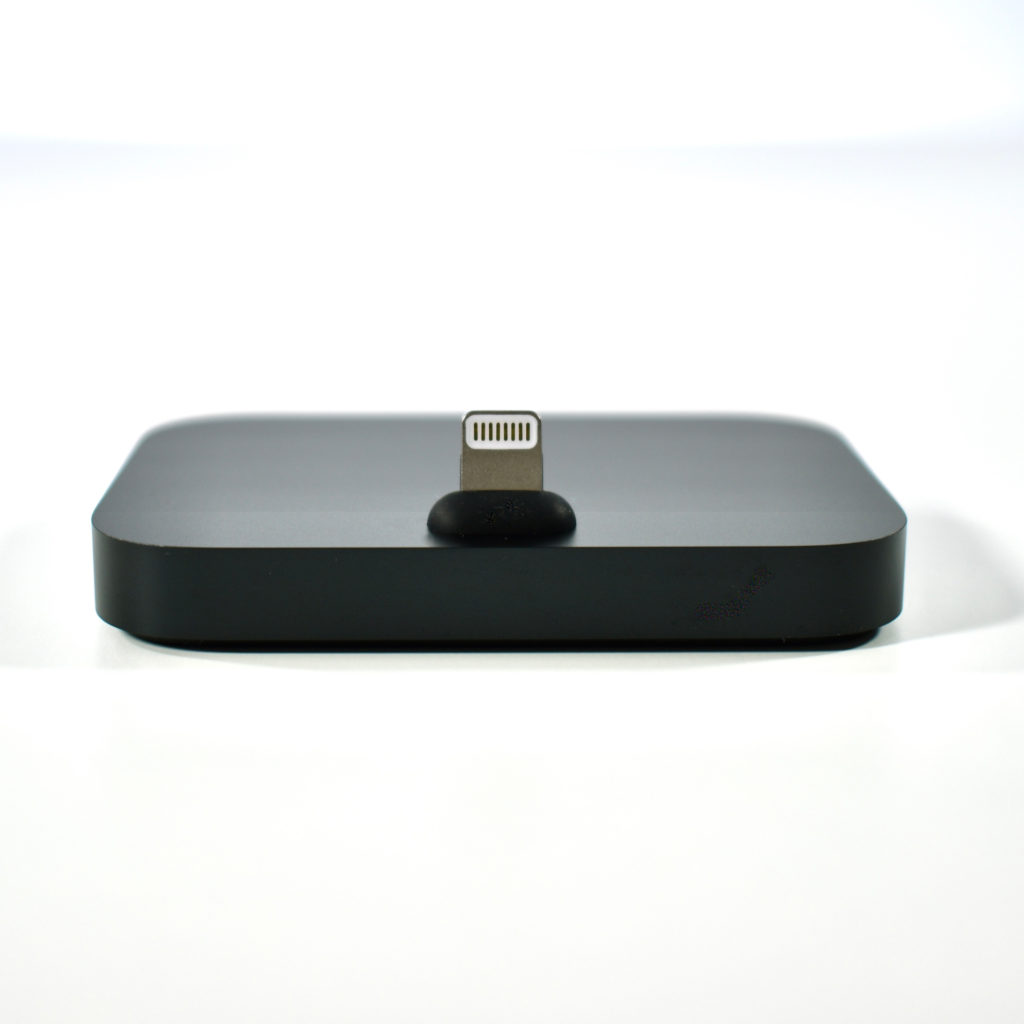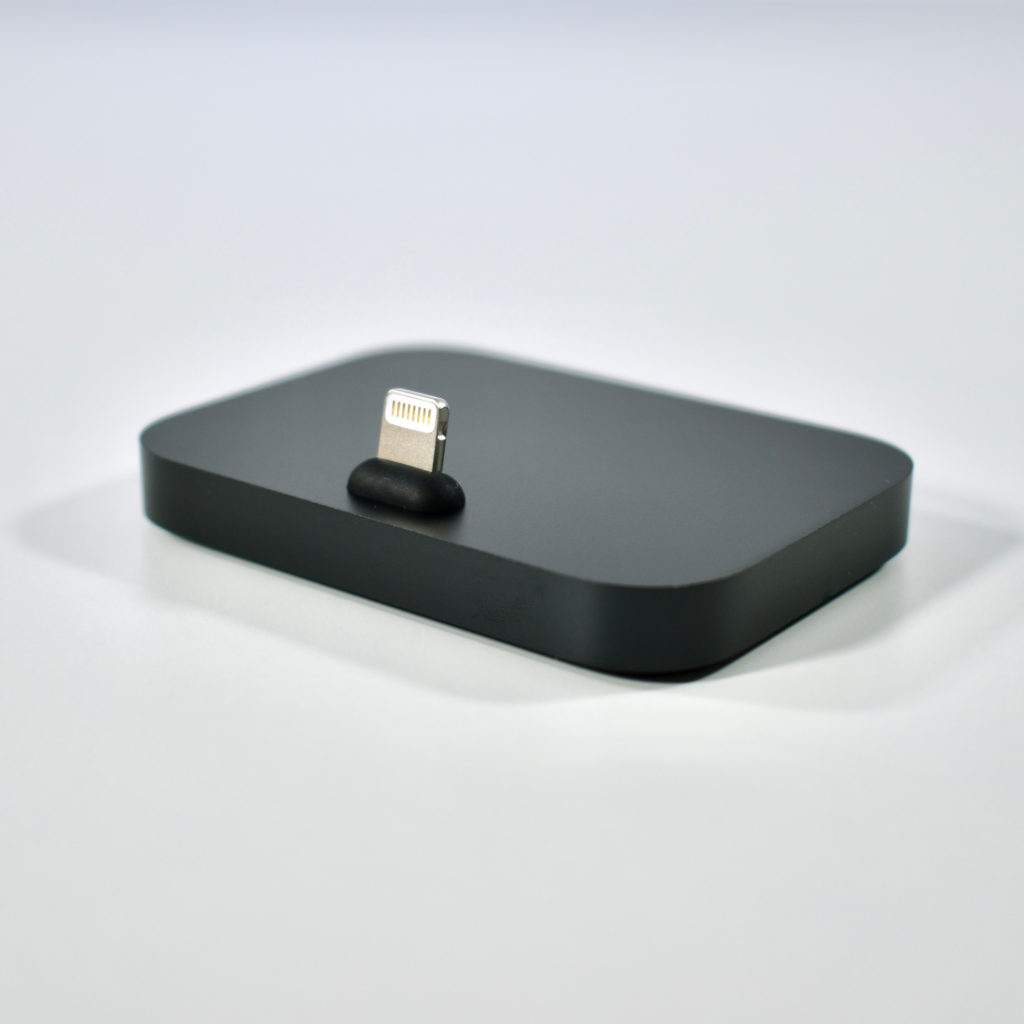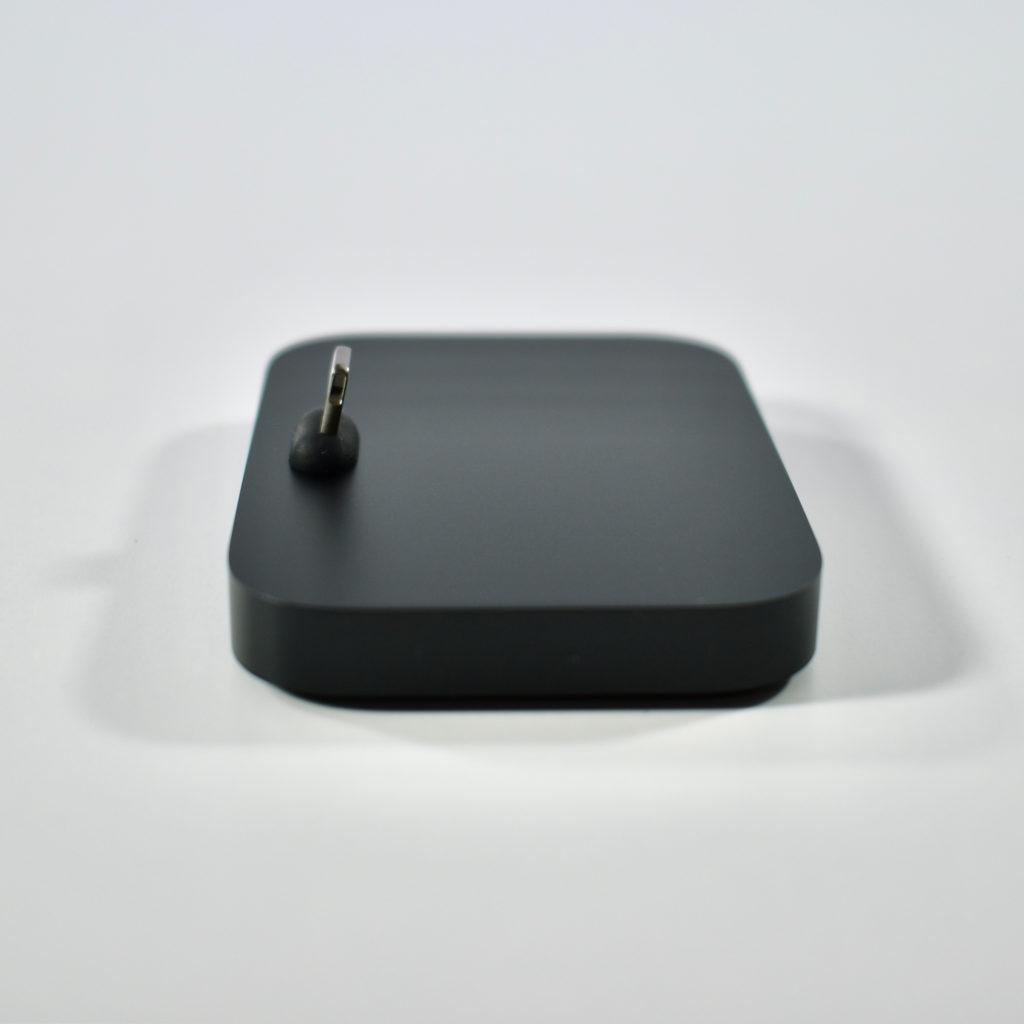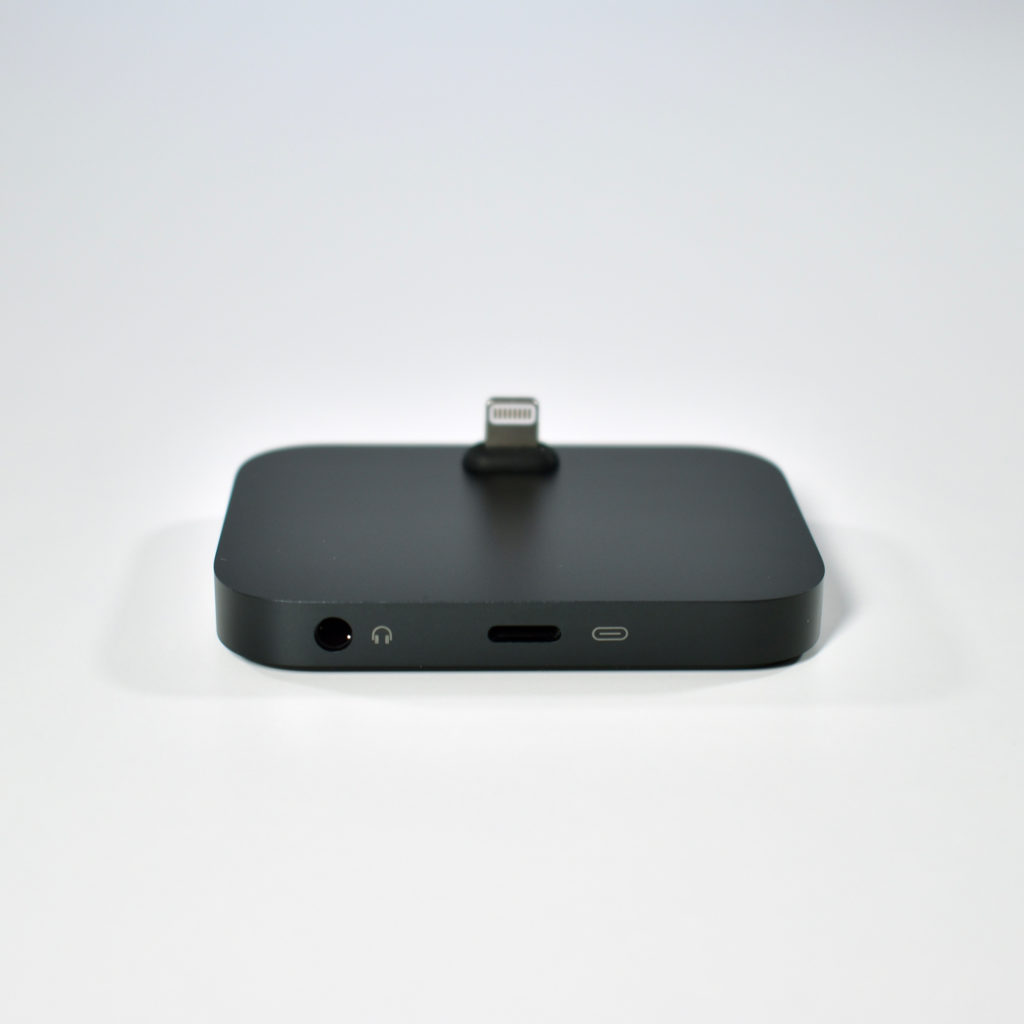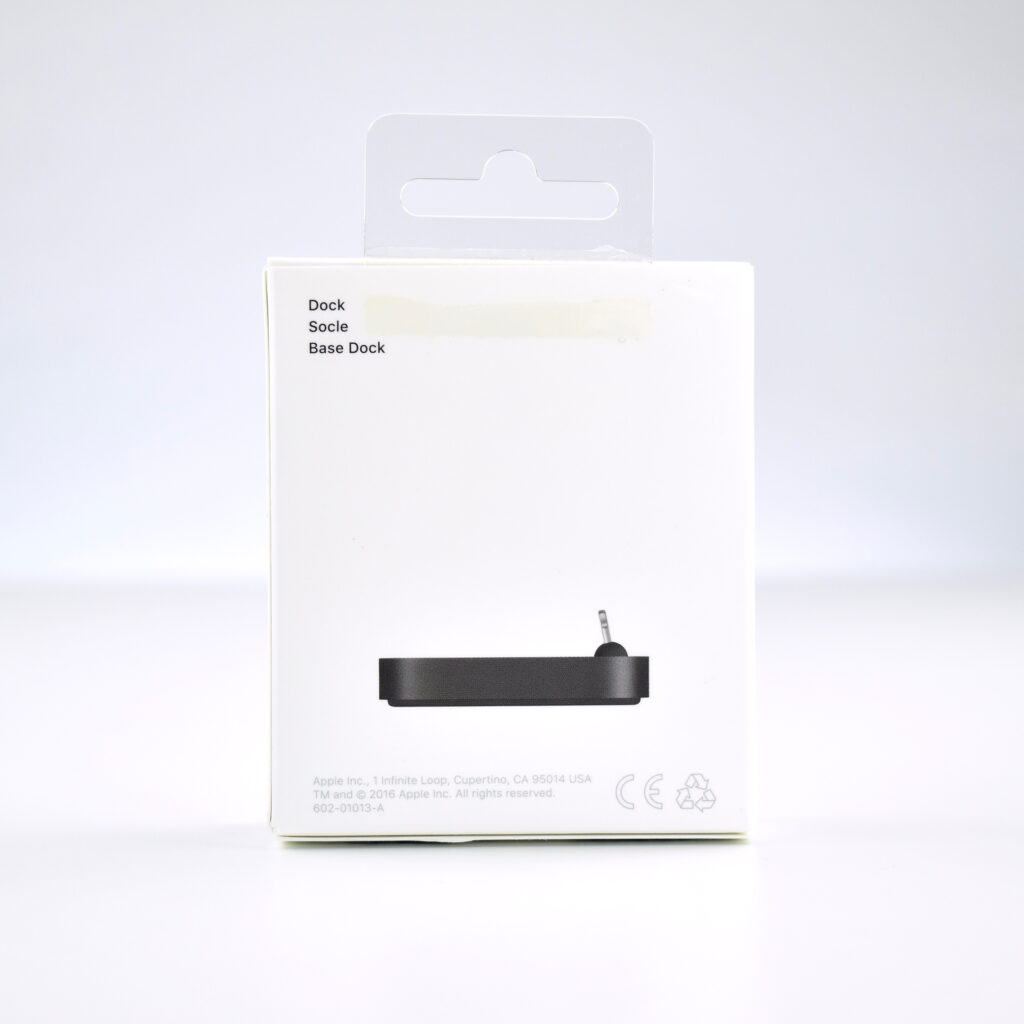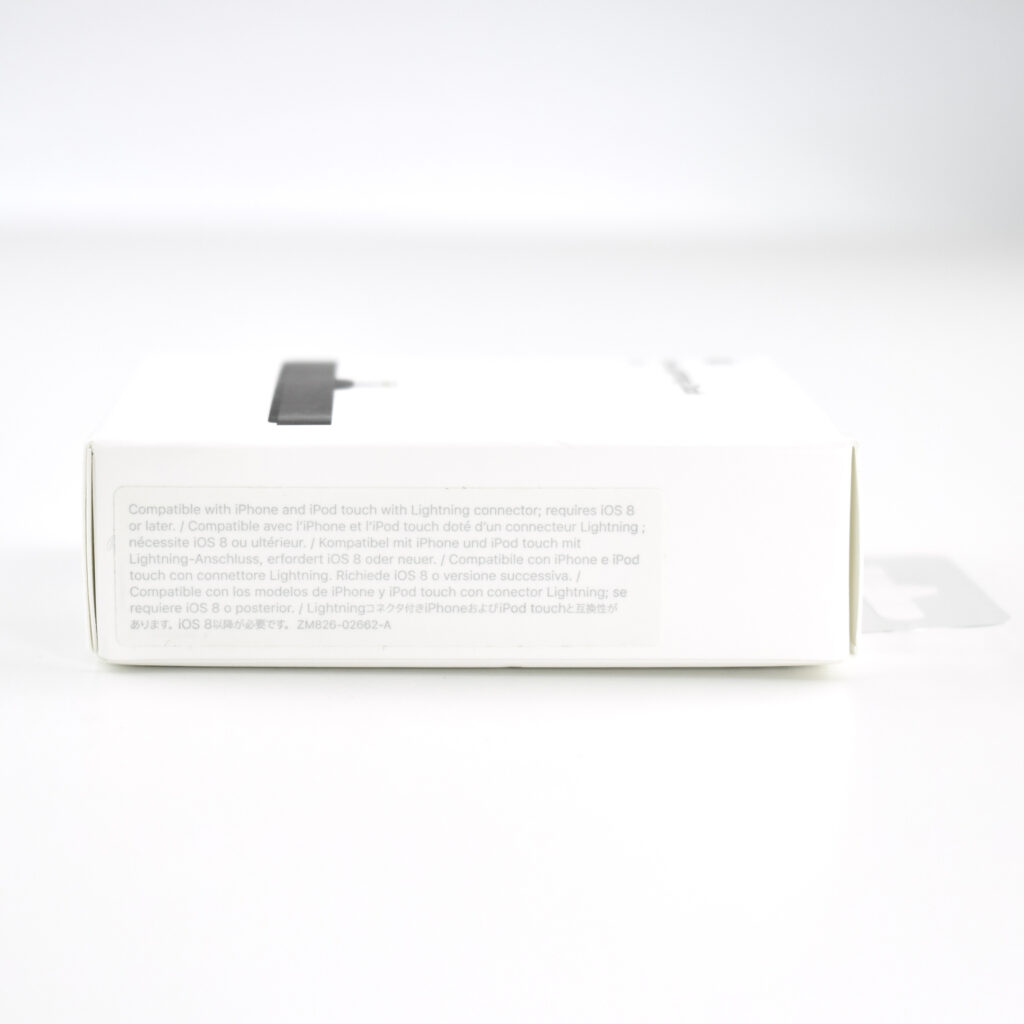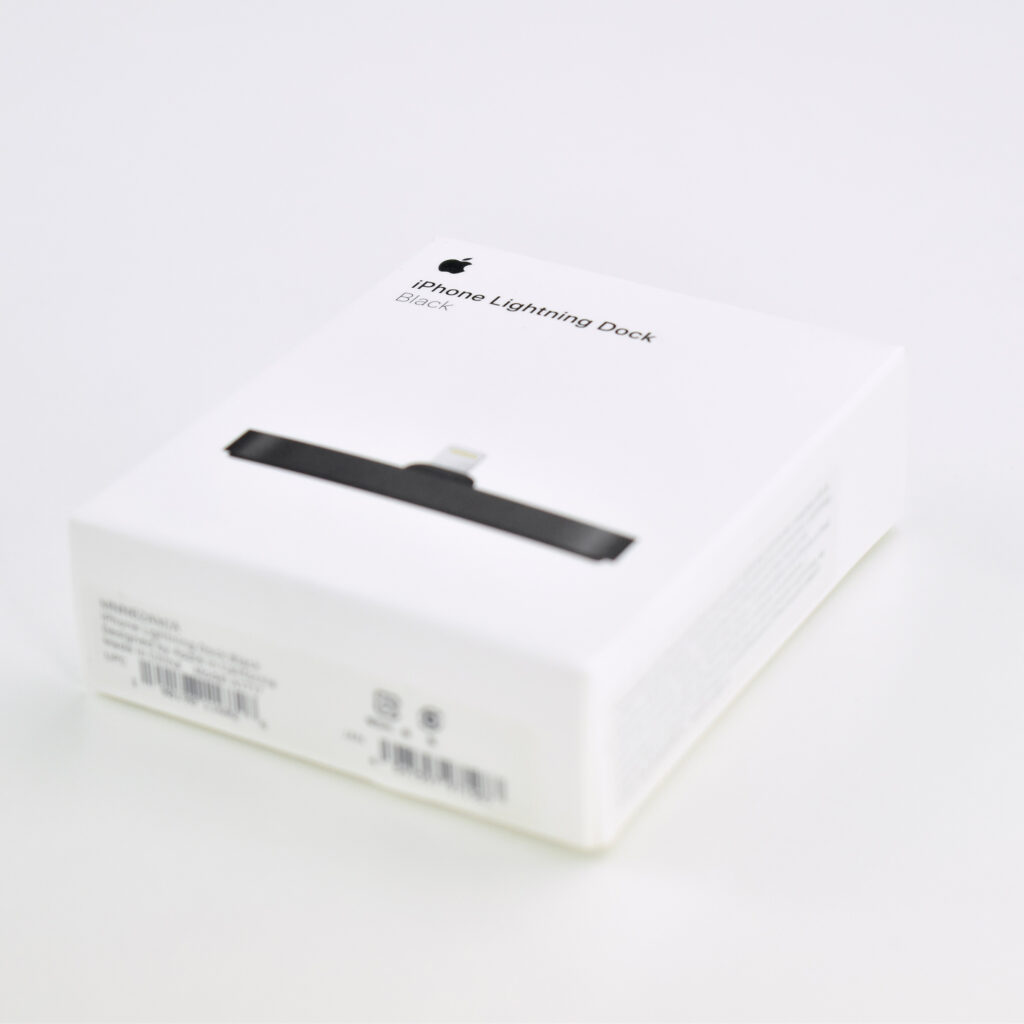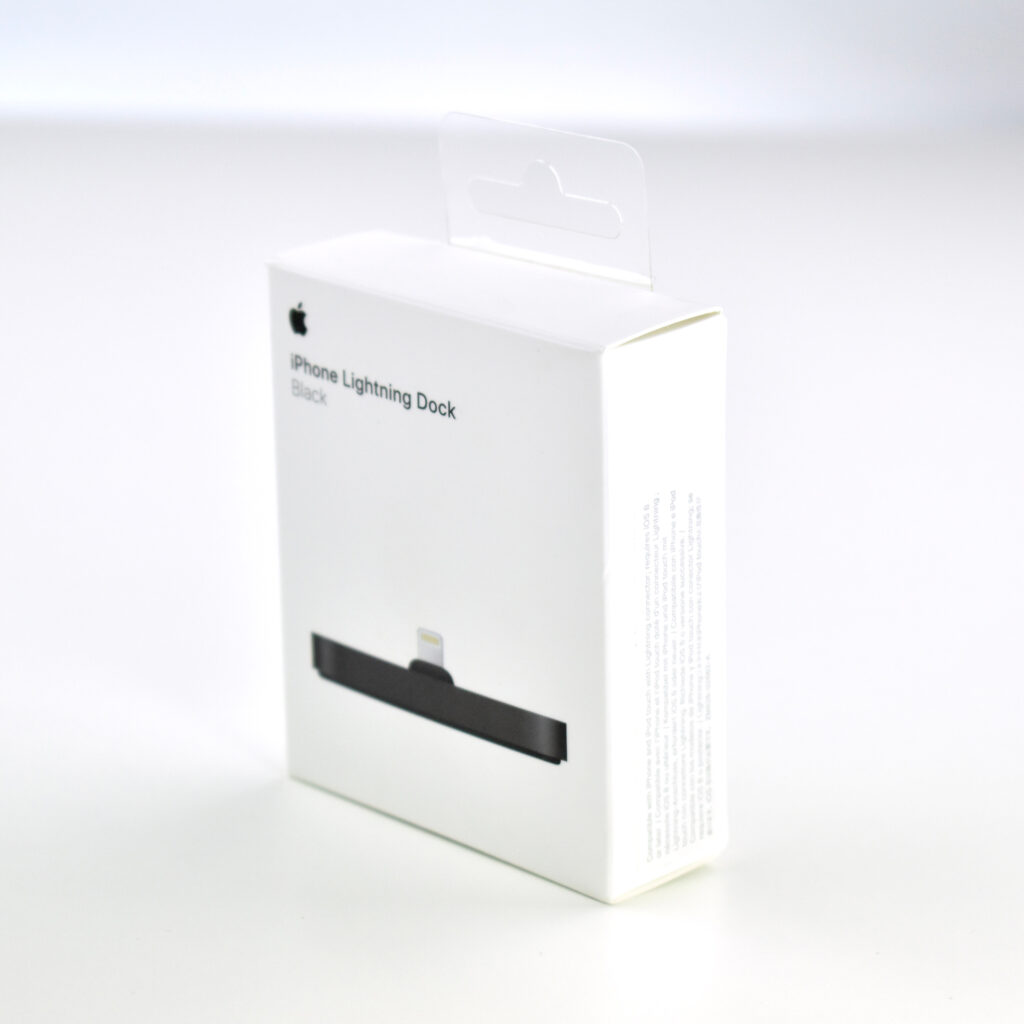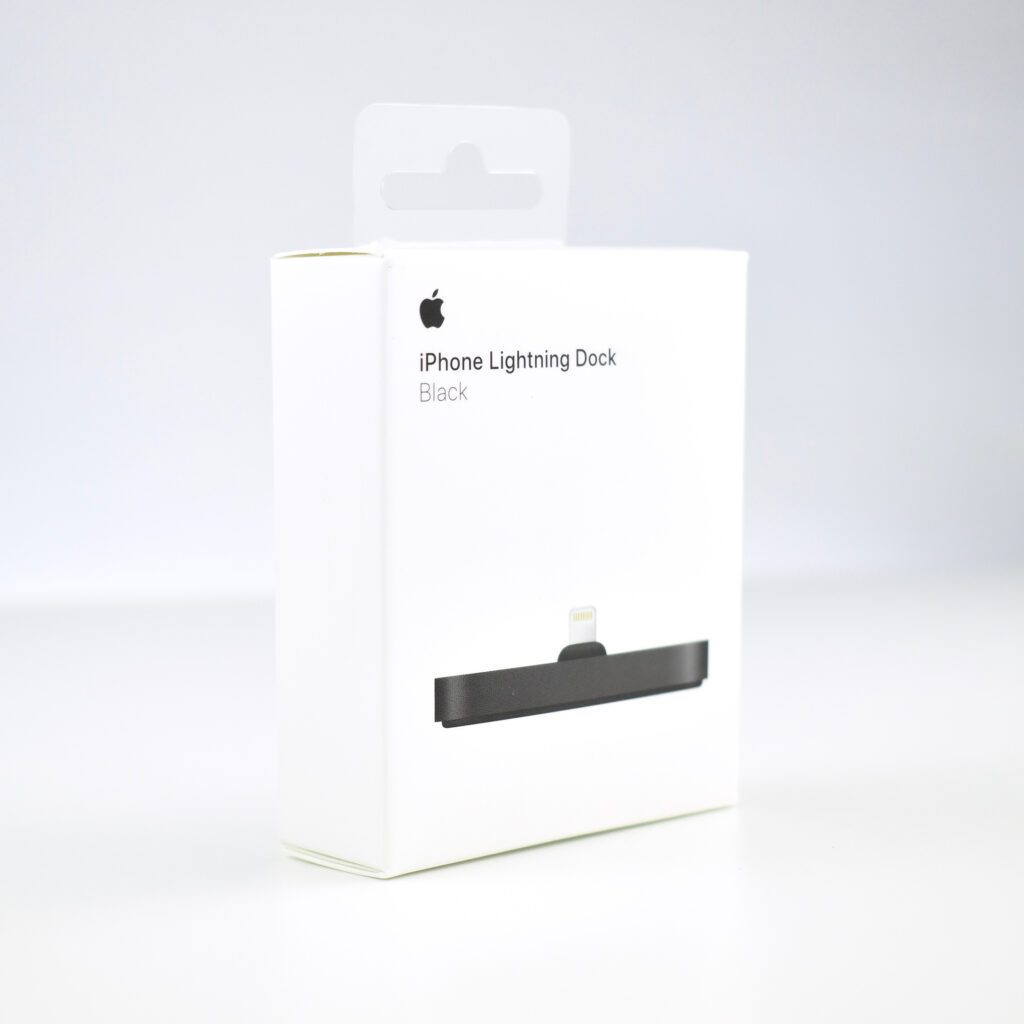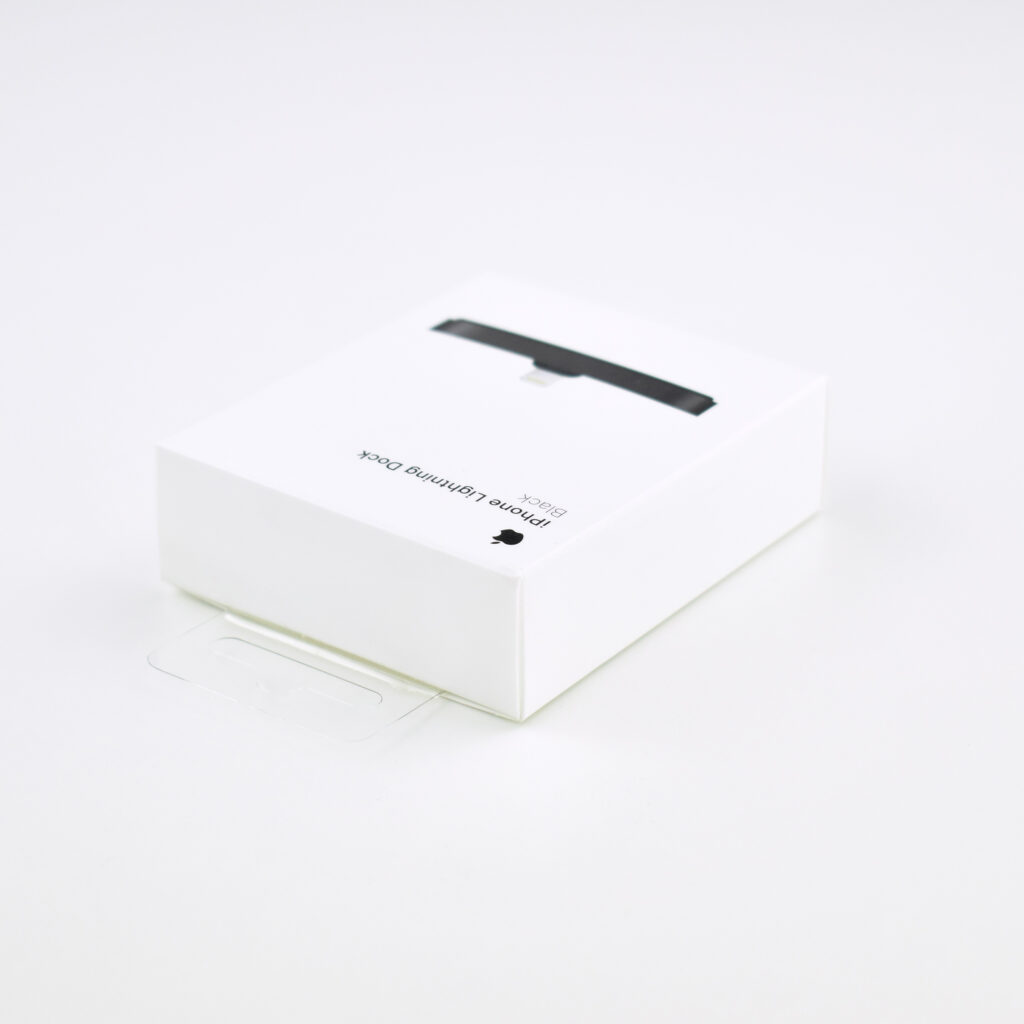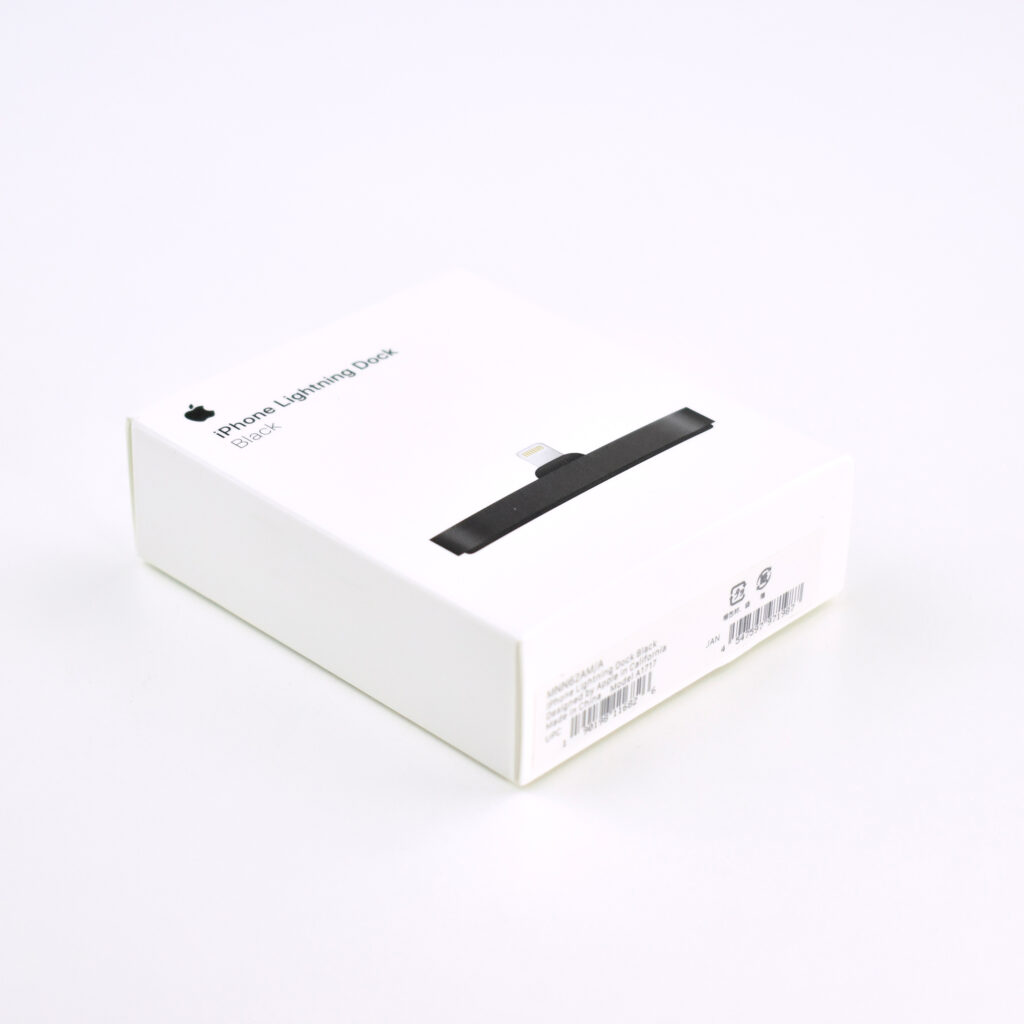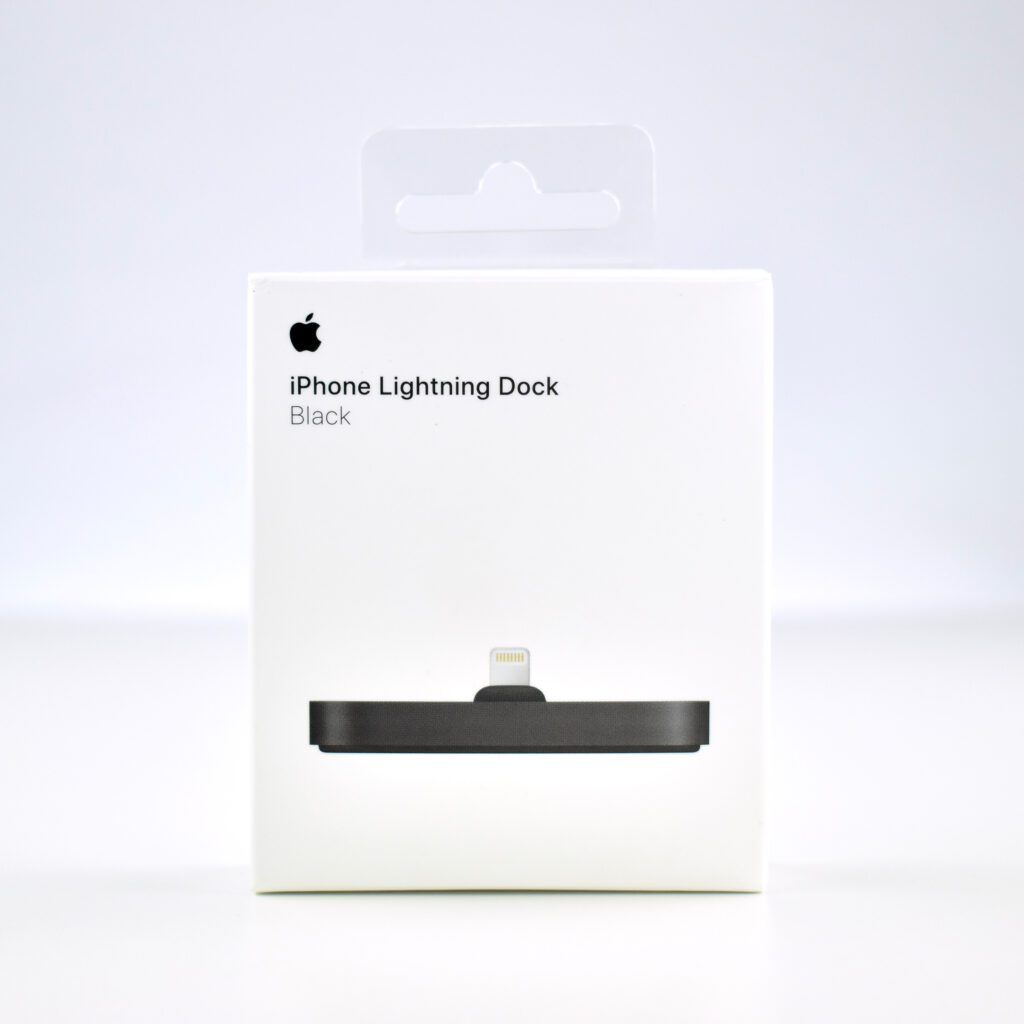.Mac (pronounced “dot Mac”) is the second in Apple’s iterations of online tools suites. This boxed version of .Mac was available in 2006 and matched other Apple retail packaging of the time.
The history of Apple’s online services has included:
iTools (released 1-5-2000) with services including @mac.com email addresses (accessed through the Mail app), iCards free greeting card service, iReview web site reviews, HomePage free web page publishing, iDisk online data storage, and a KidSafe directory of child-friendly web sites.
.Mac (released 7-17-2002) with services including HomePage web hosting, iDisk online disk storage service, @mac.com email service (POP and IMAP), iCards online greeting cards, Backup personal backup (to iDisk, CD, or DVD), and McAfee Virex. Later enhancements included an online Mail interface, Back to My Mac remote desktop, Web Gallery, and the ability to add more online web storage and segment it according to purpose.
MobileMe (released 7-9-2008) had a difficult rollout where some users experienced instability over a period of several weeks. Steve Jobs later wrote, “it was a mistake to launch MobileMe at the same time as iPhone 3G, iPhone 2.0 software, and the App Store.” Customers received a free 60-day extension of MobileMe services. Although .Mac removed some services, including iCards and some specific web services, greater iLife integration was added and primary services continued to be expanded and upgraded.
iCloud (beginning Fall 2011) was released with iOS 5 and the iPhone 4S. iCloud includes email, calendar, file across multiple devices, 5 GB of free cloud storage, and offers additional paid tiers for more storage.
For users like me who have been customers since the iTools era, all email domains remain available, including @mac.com, @me.com, and @icloud.com.
This .Mac software box is from 2006 and features four services on the packaging, including iWeb, iPhoto, online file sharing, and the online Backup service.
Source: Wikipedia

